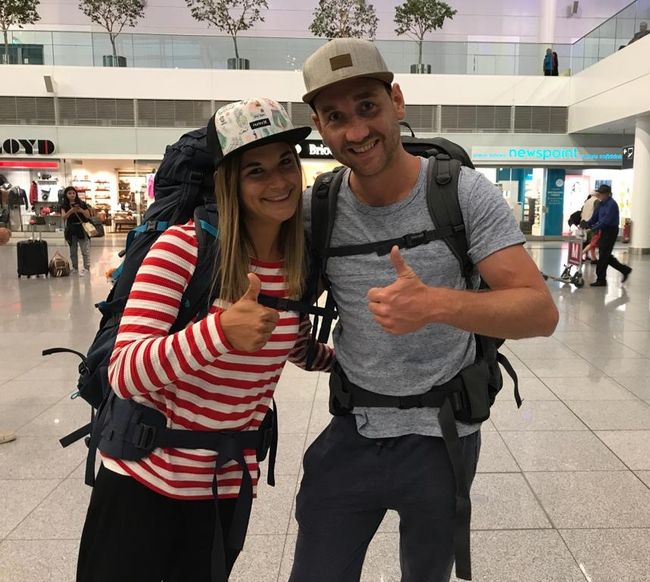Our desert intermezzo
Lolomiina: 27.12.2019
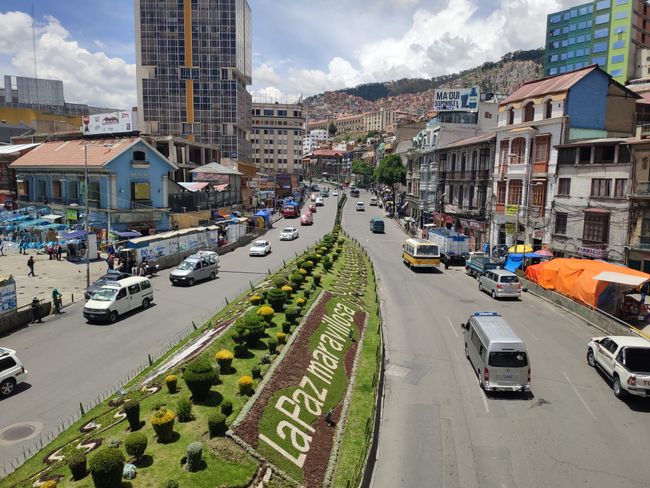
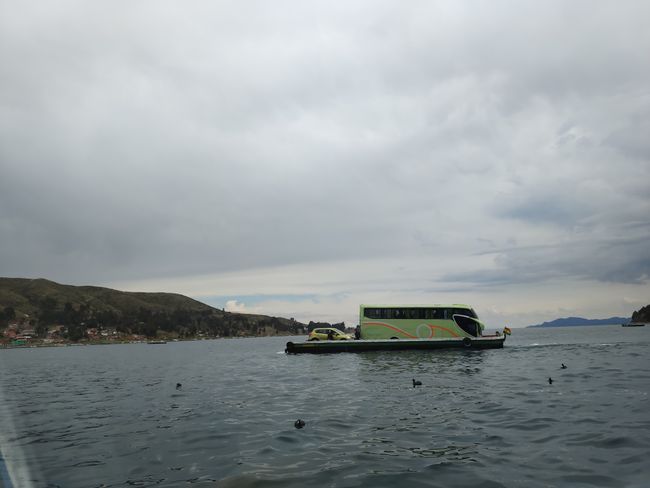
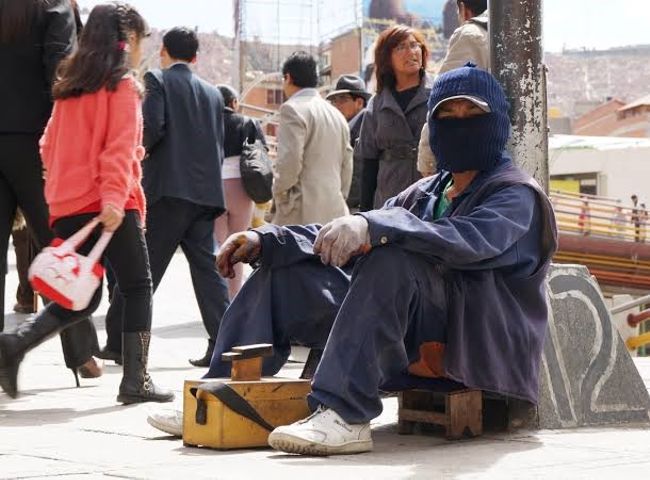
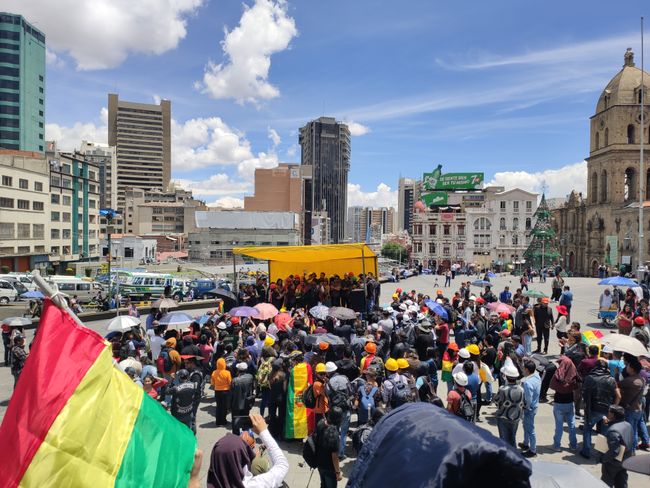
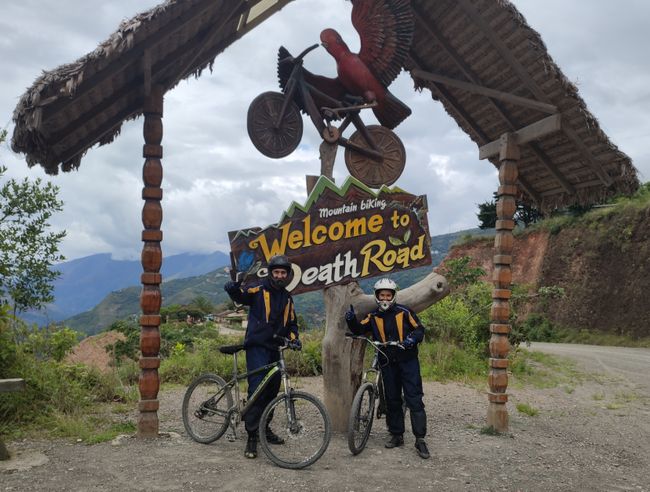
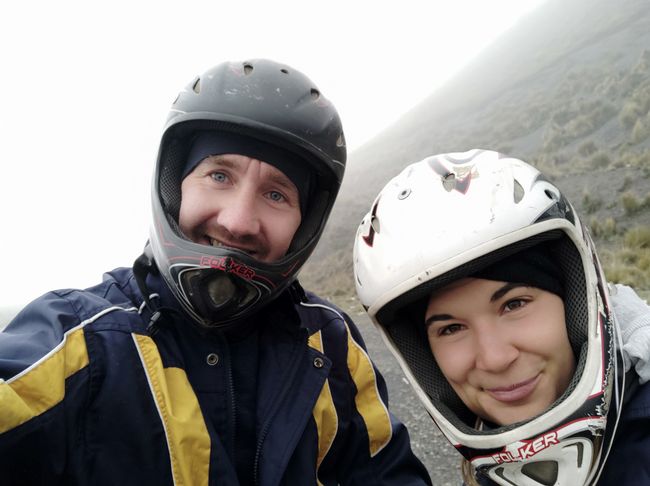
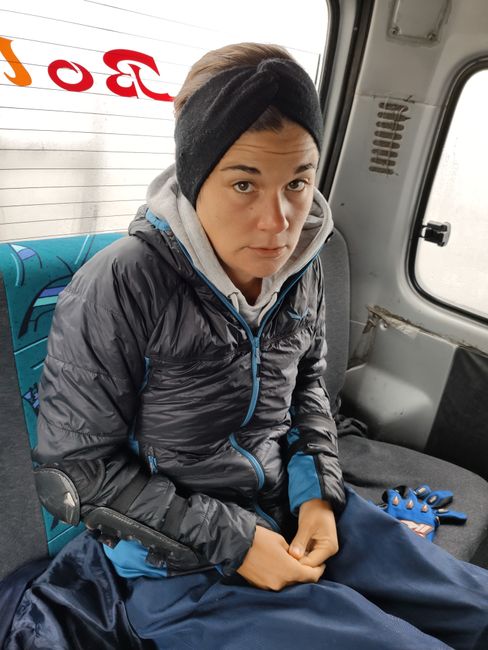
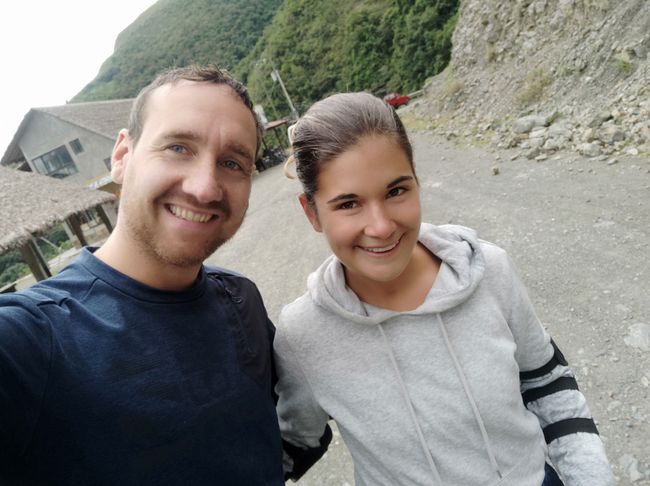
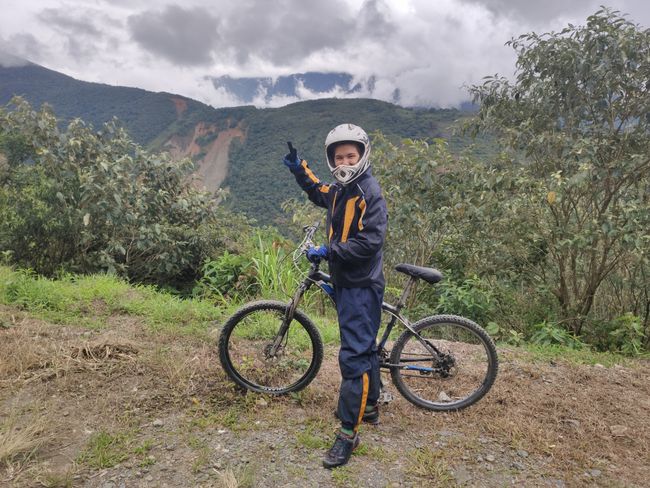
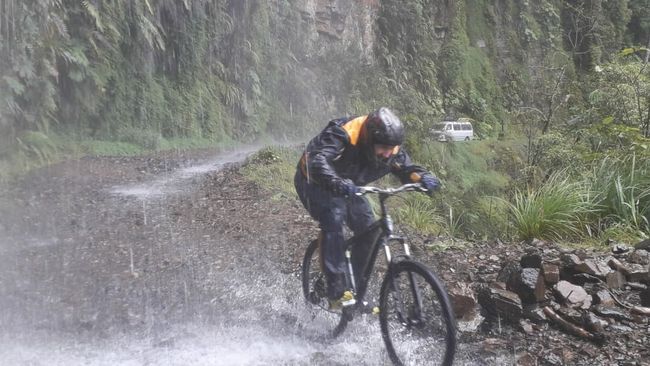
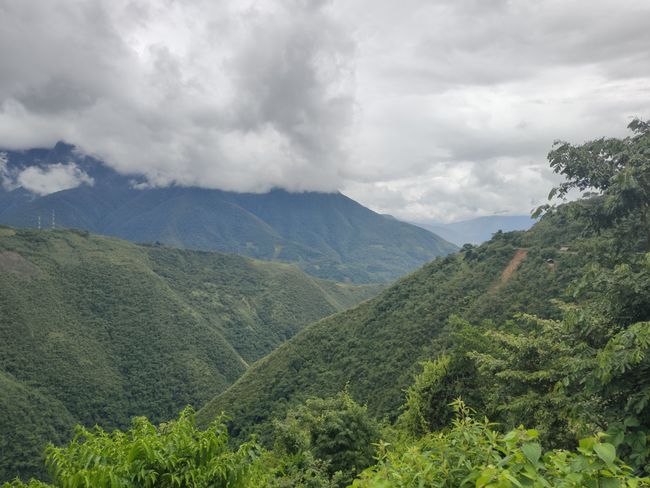
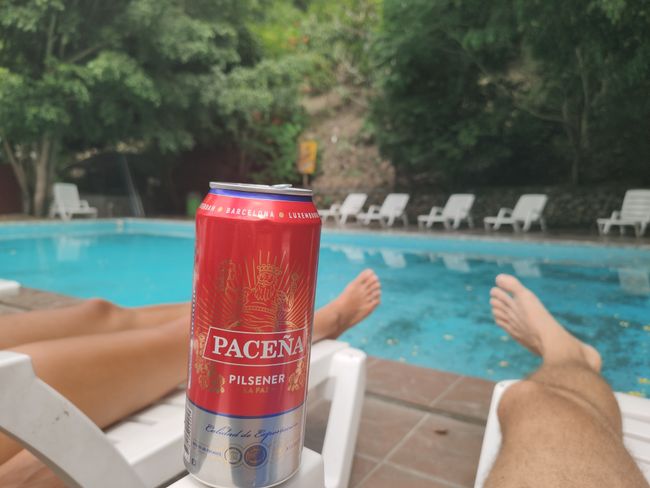
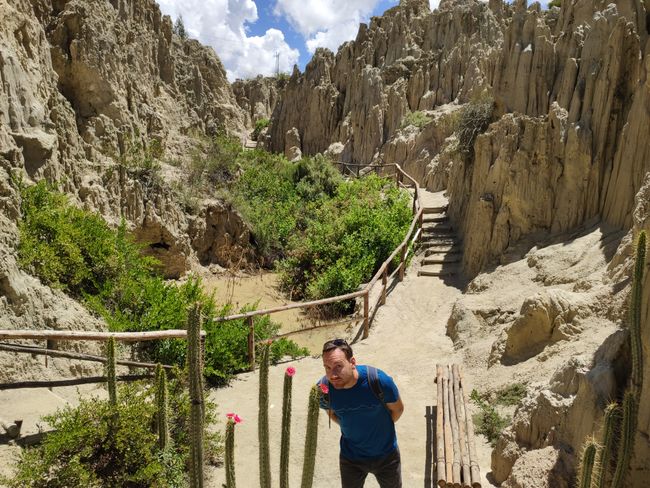
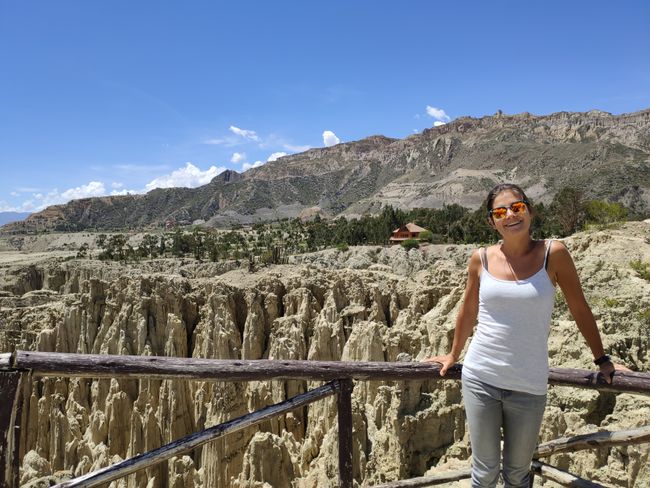
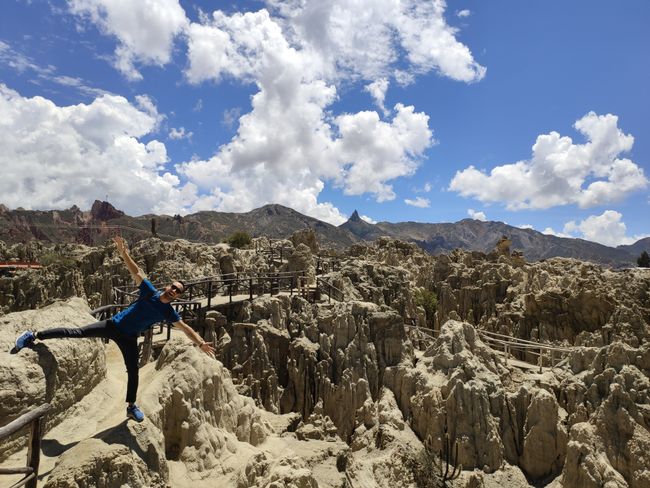
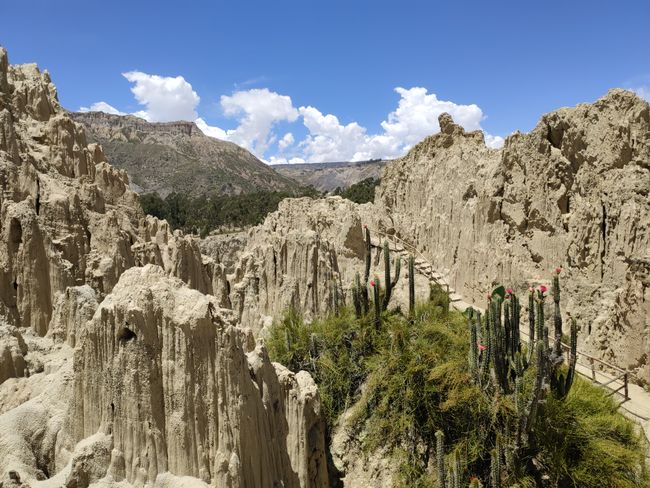
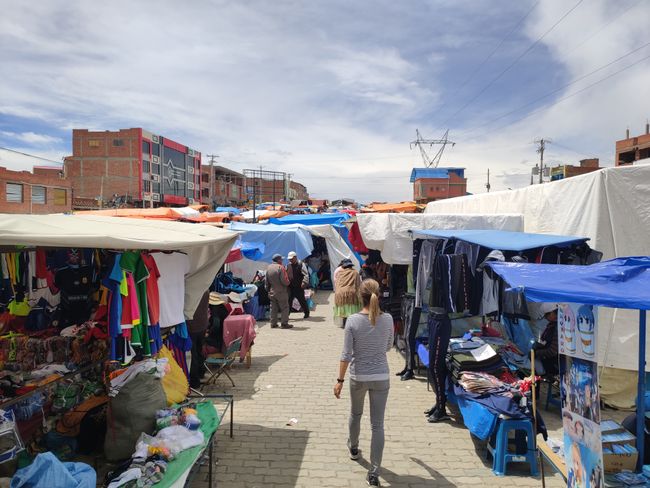
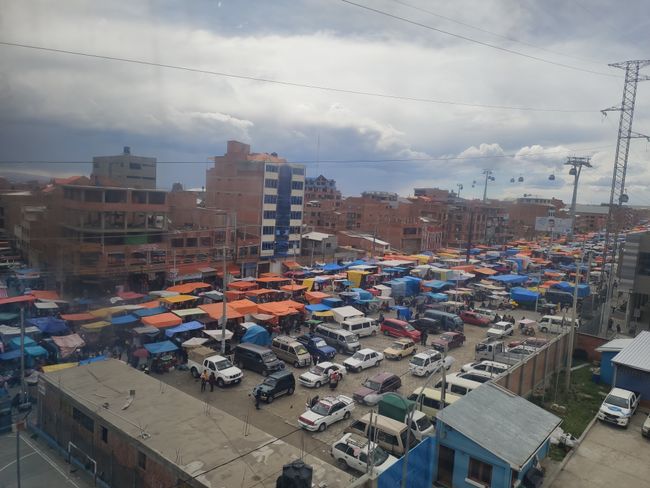
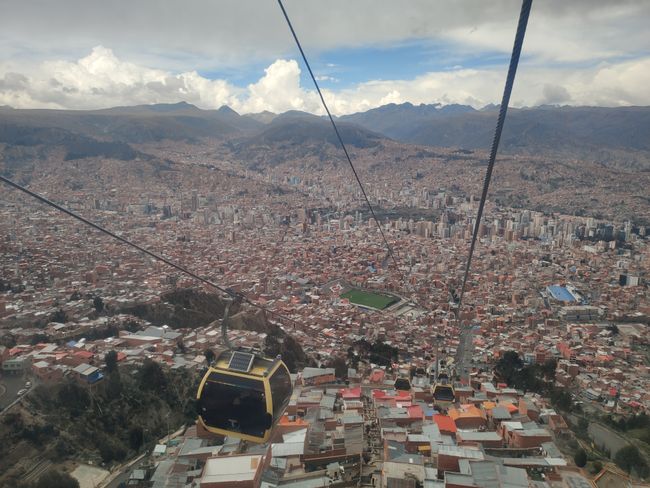
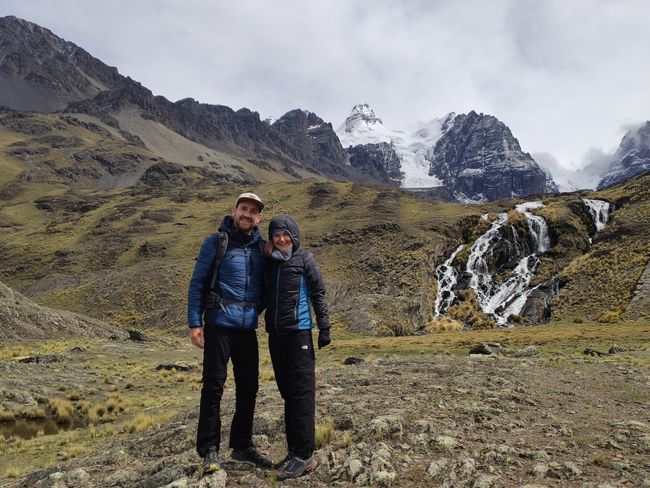
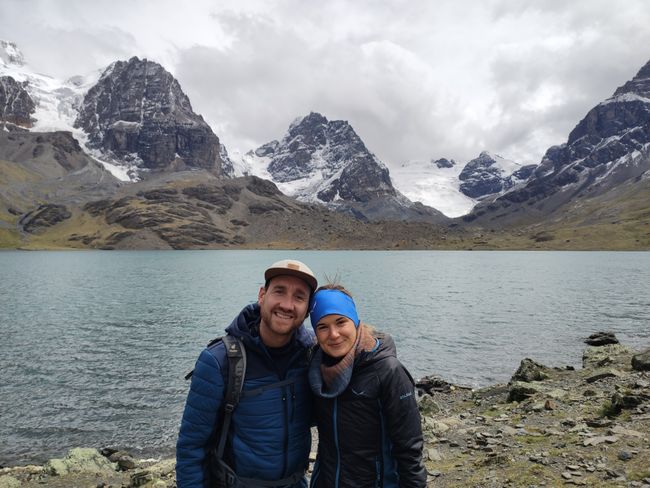
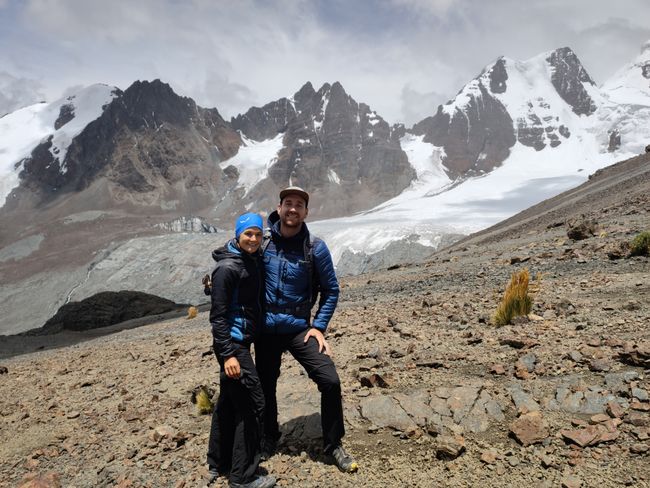
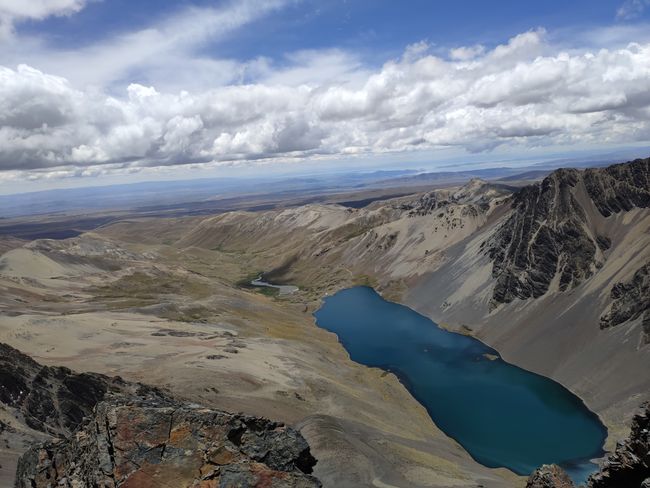
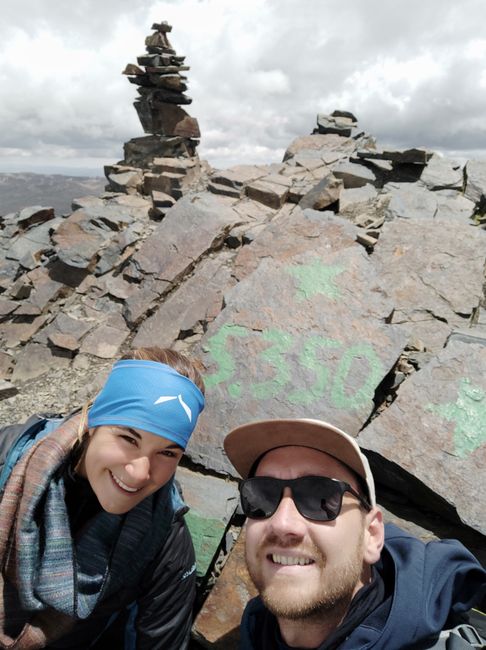
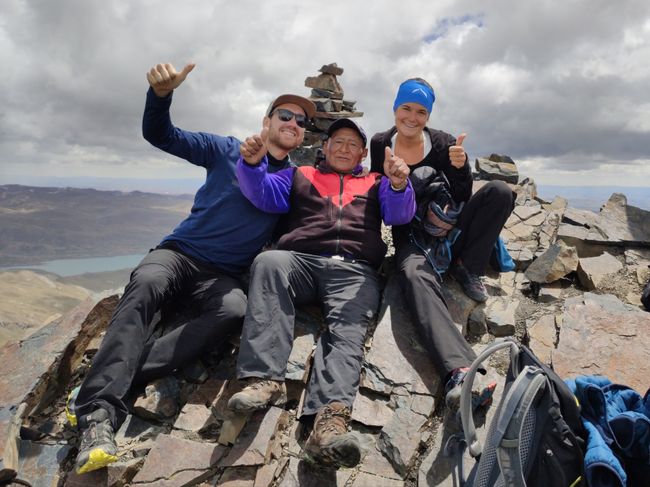
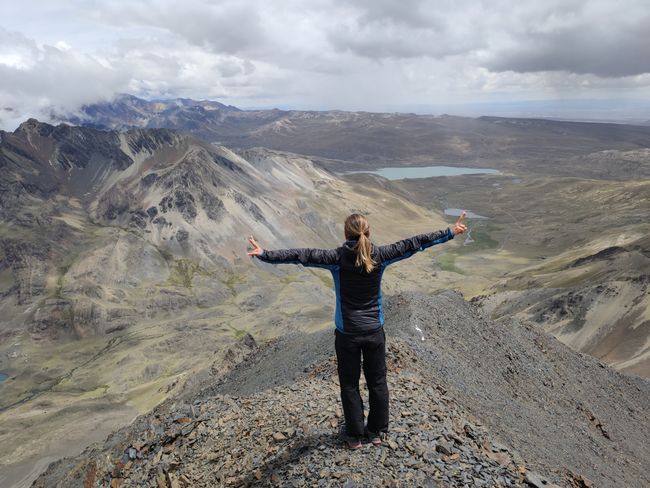
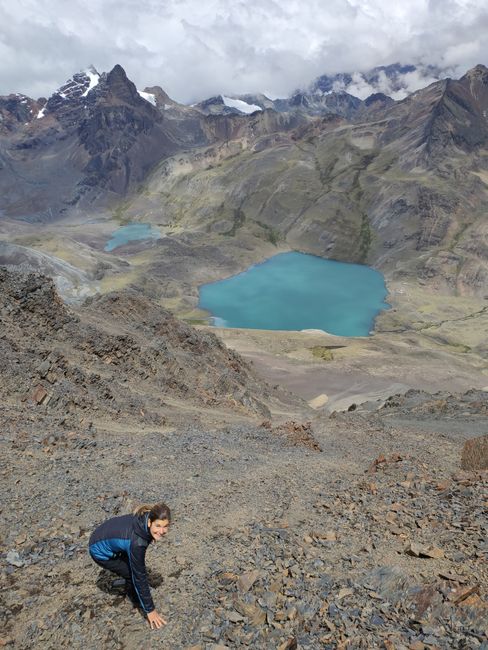
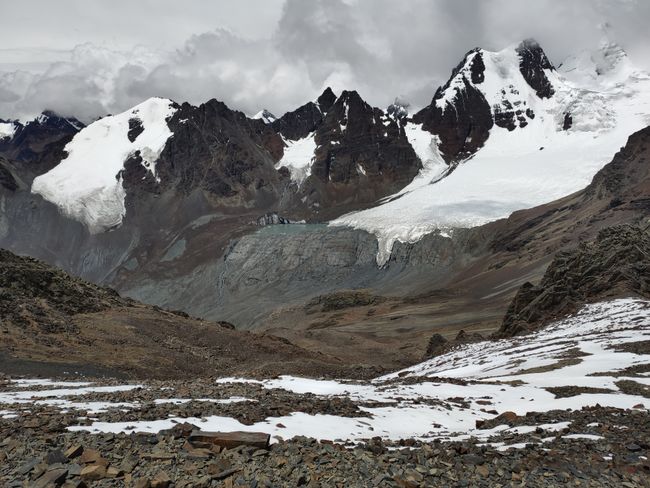
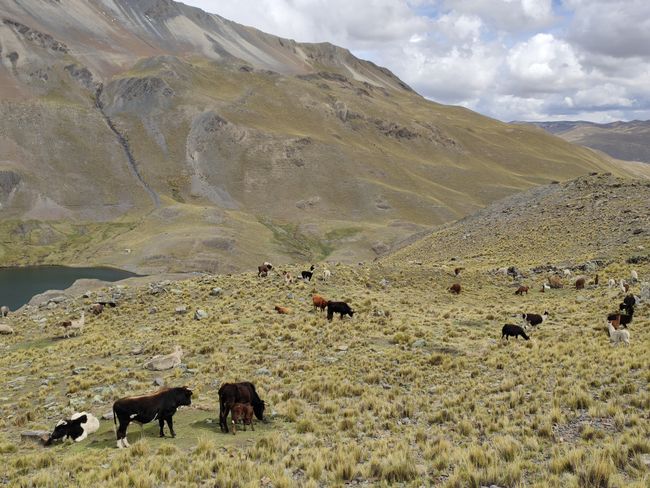
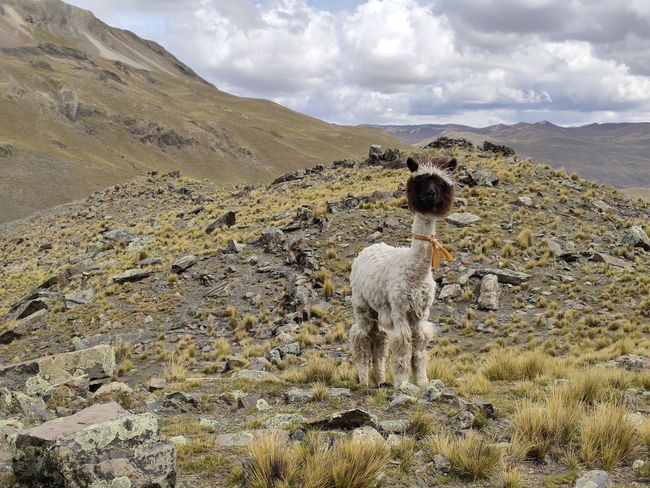
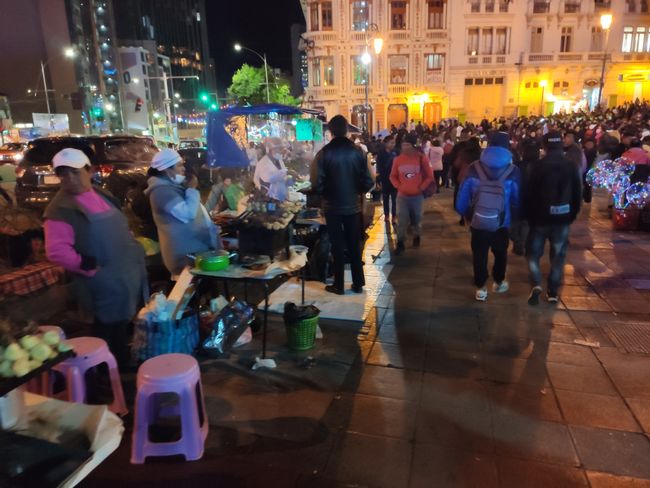
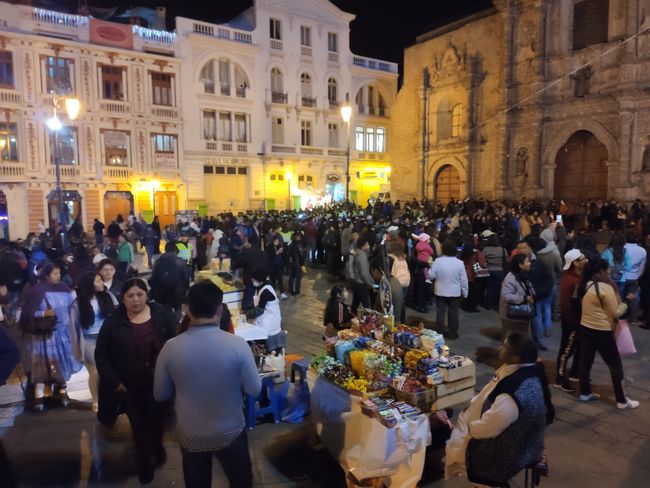
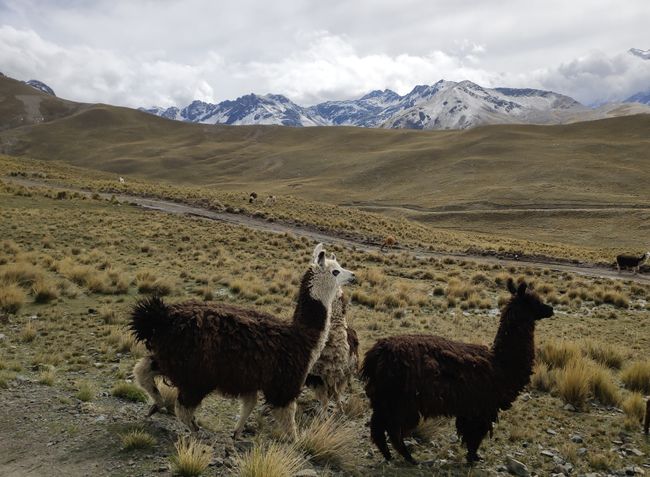
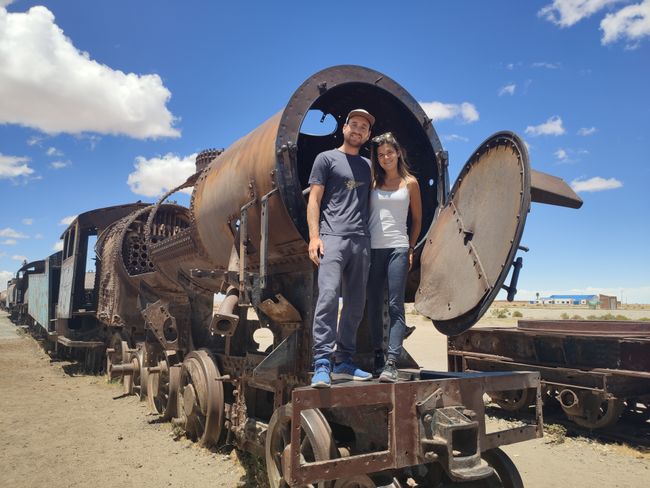
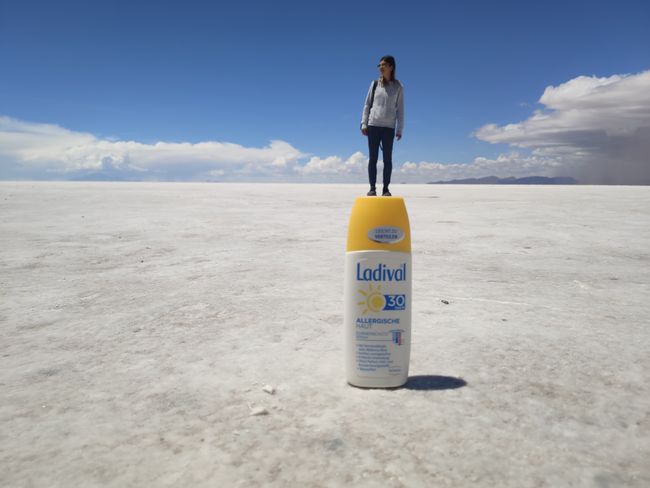
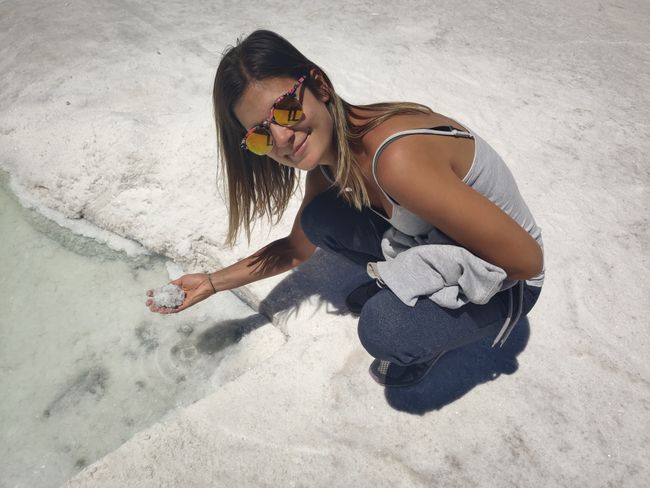
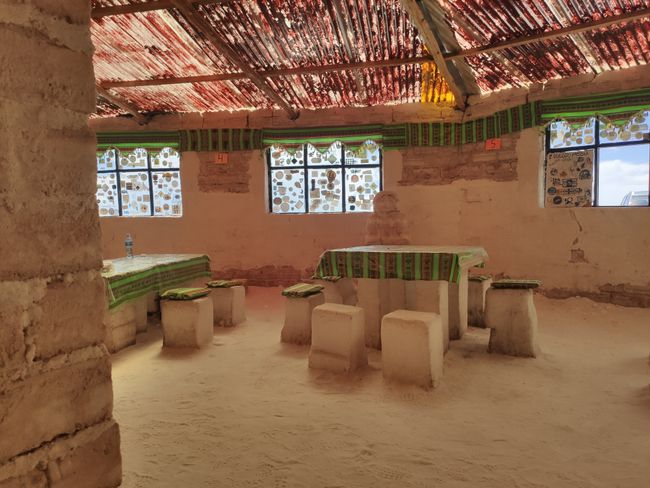
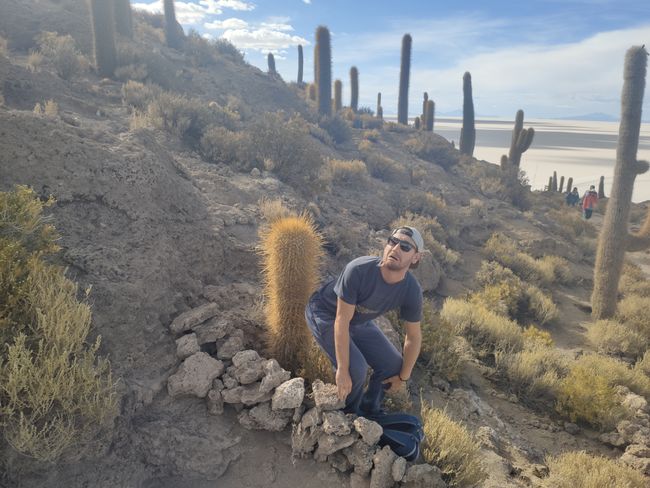
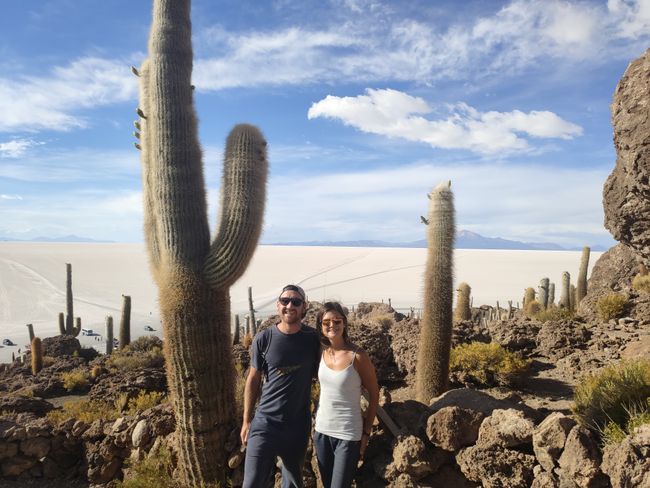
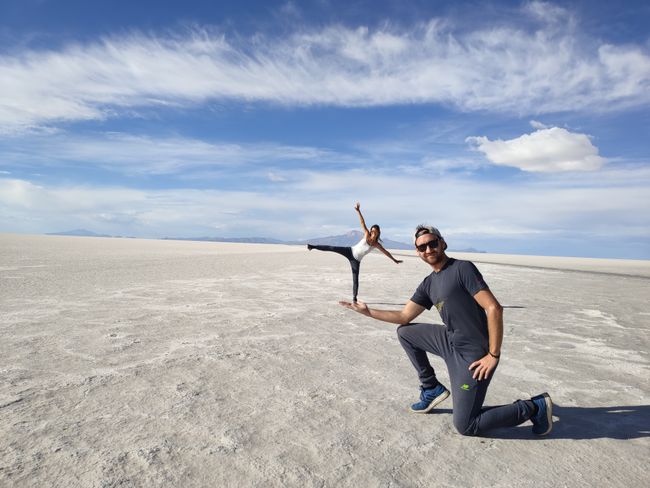
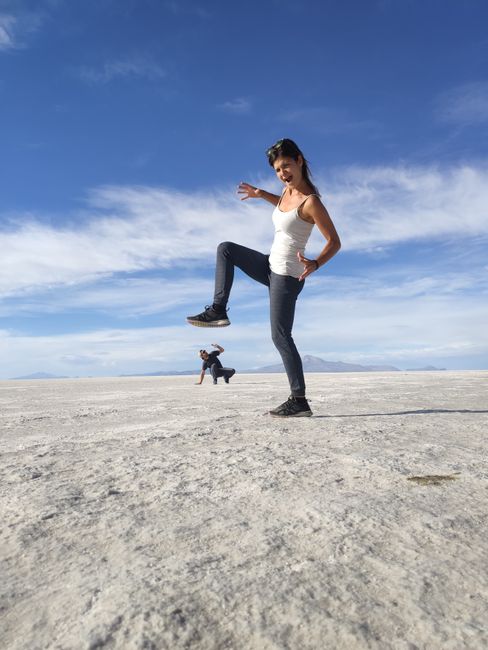
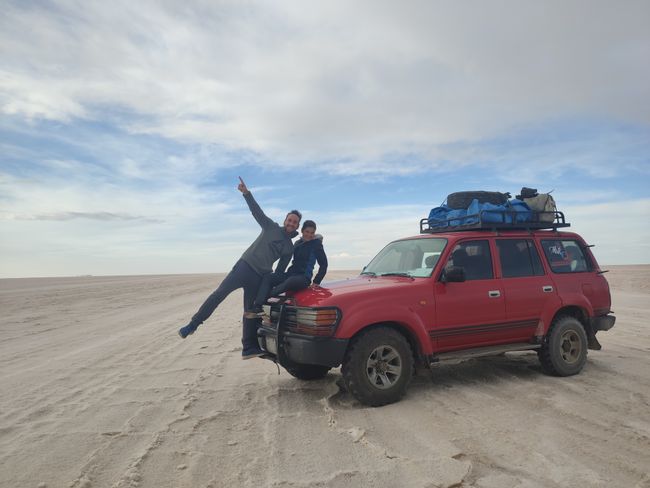
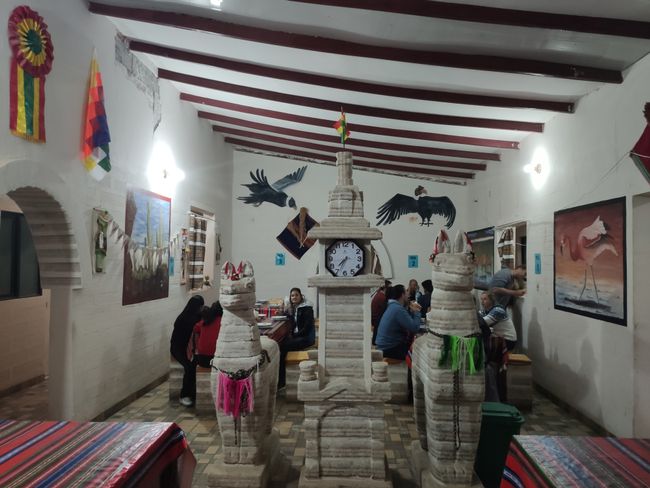
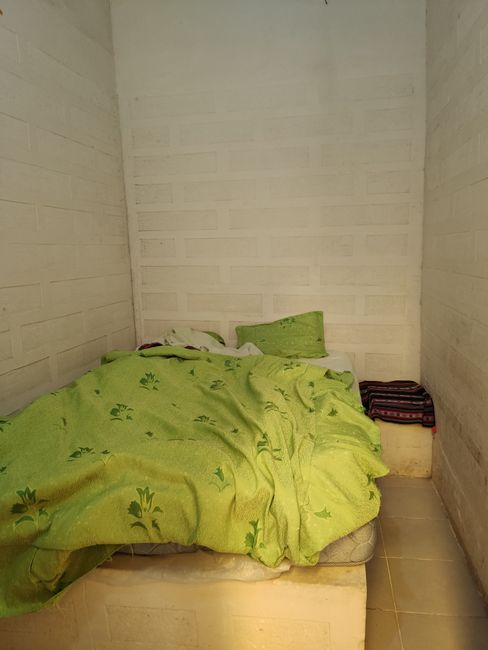
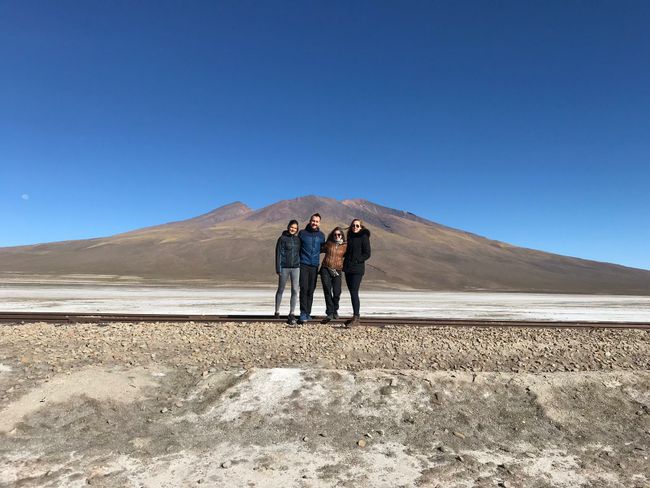
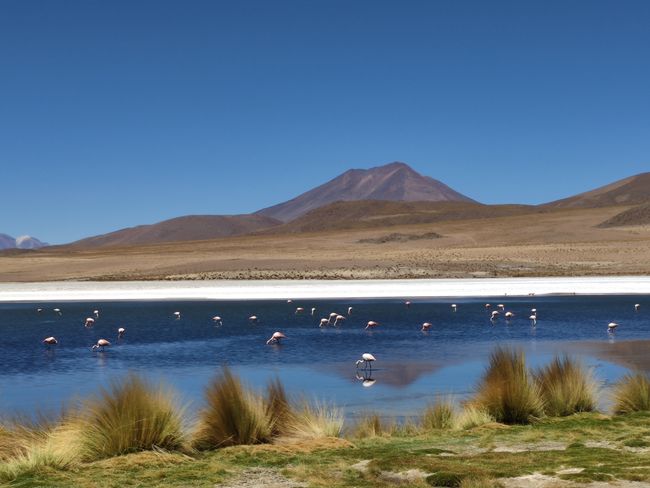
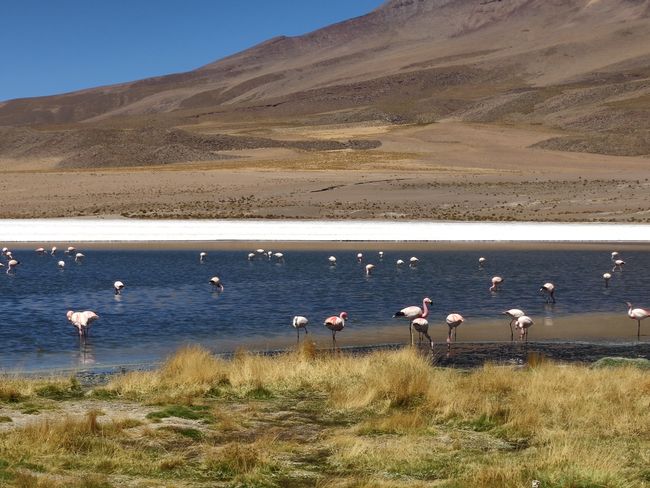
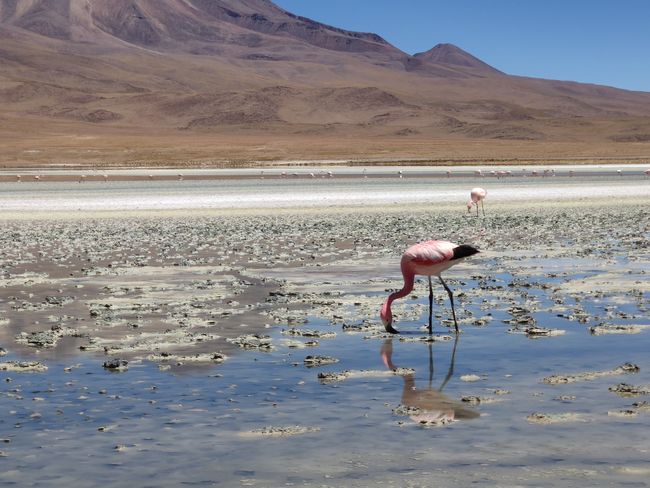
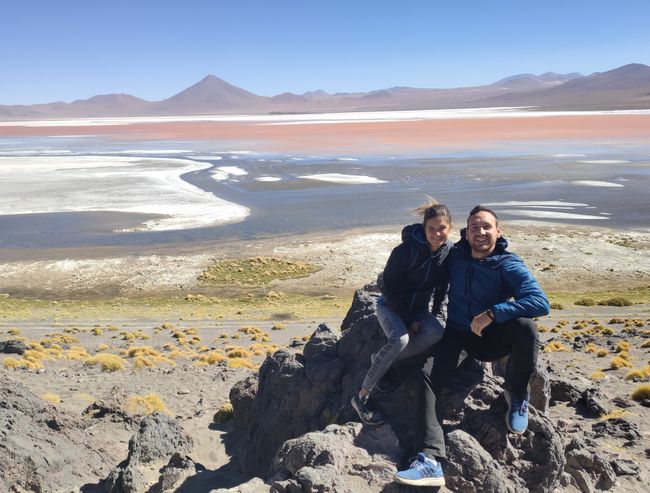
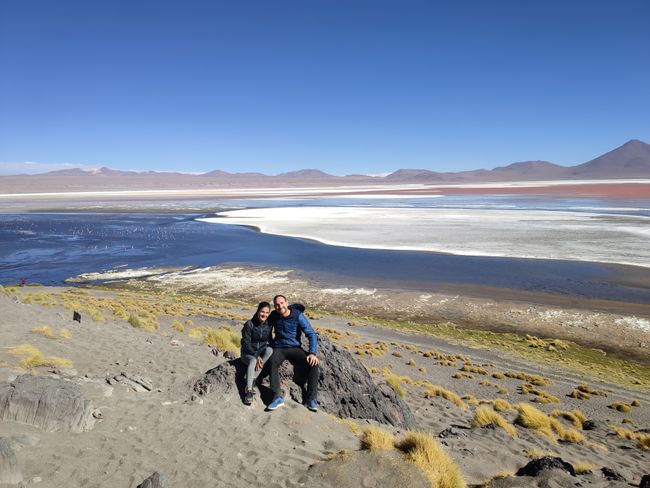
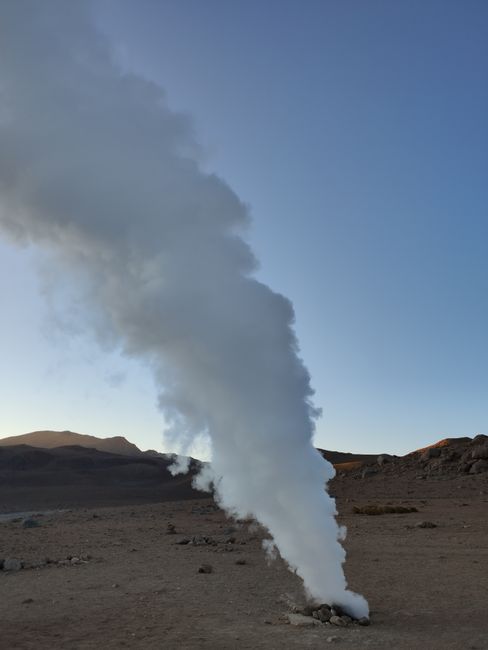
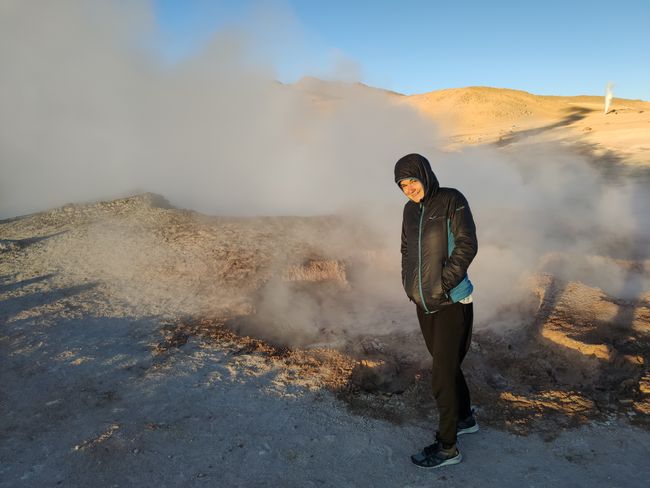
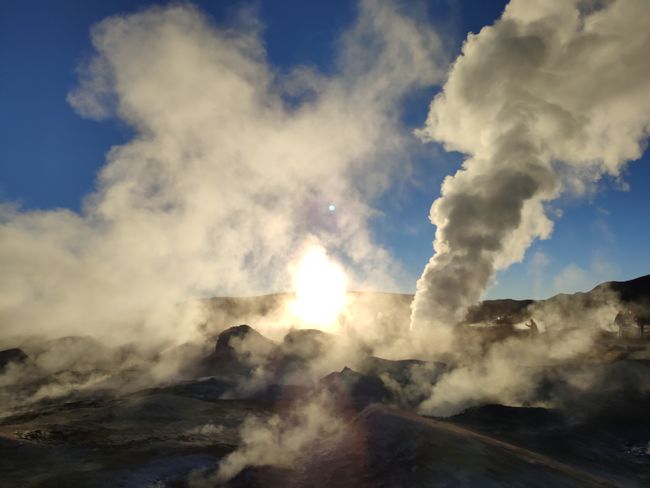
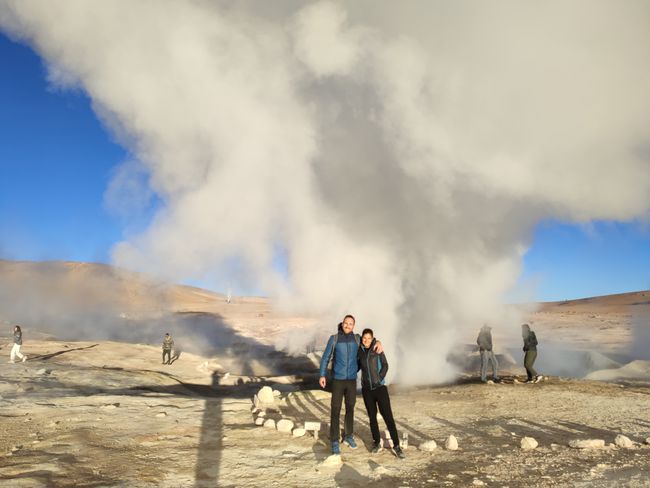
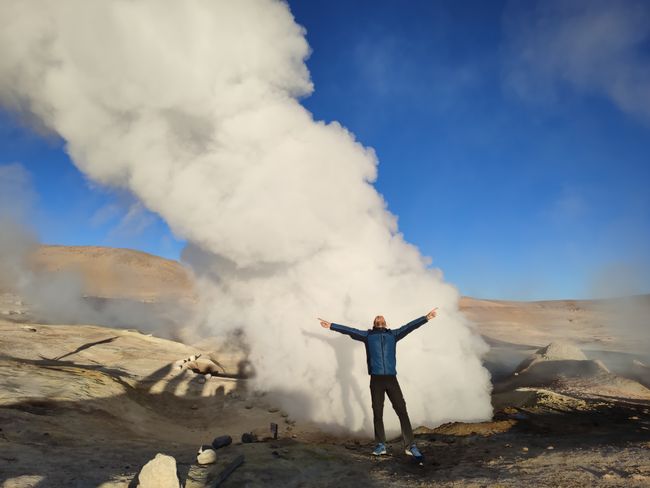
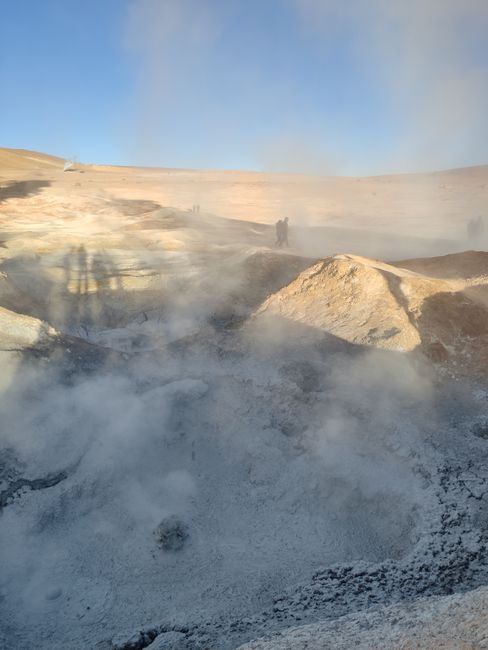
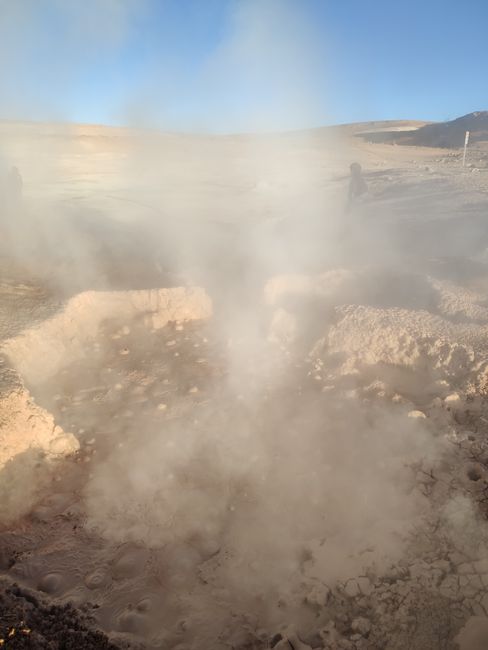
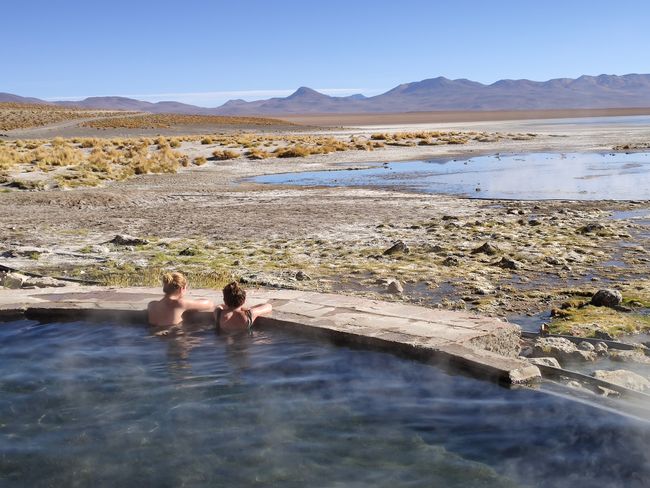
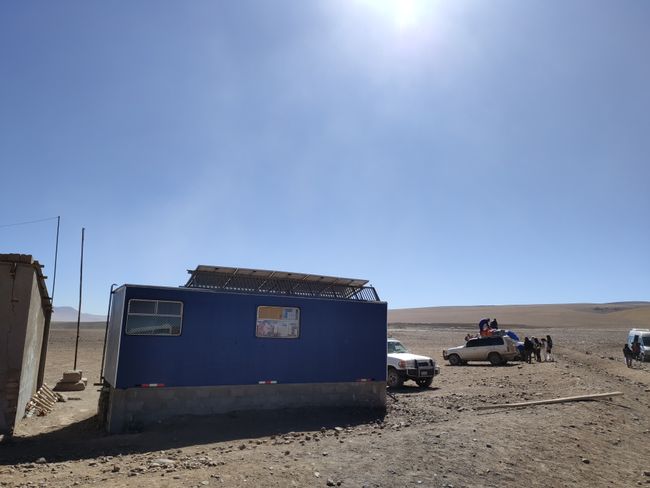
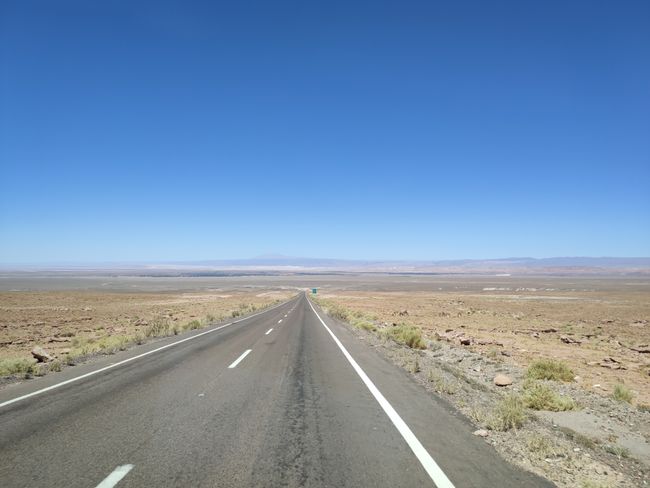
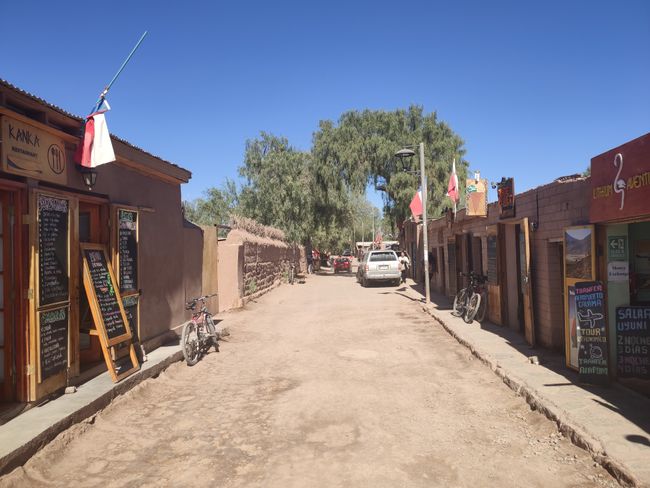
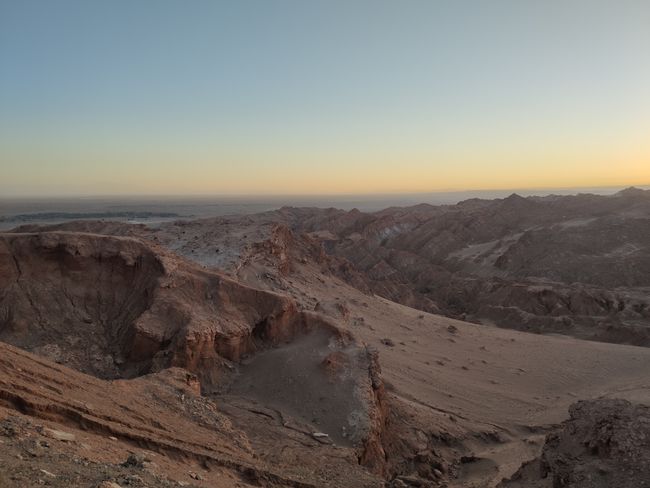
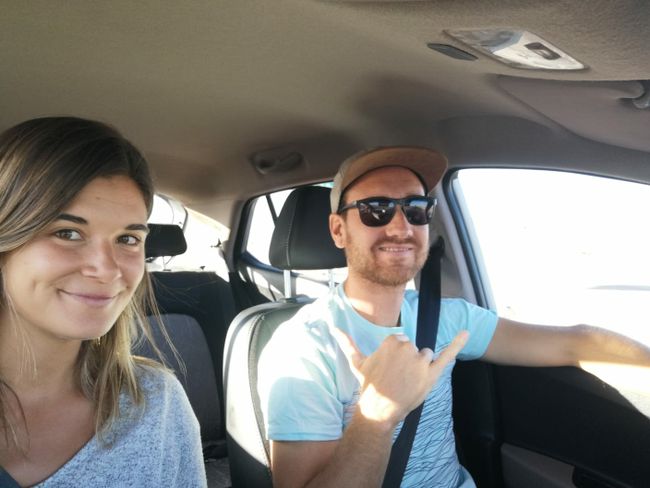
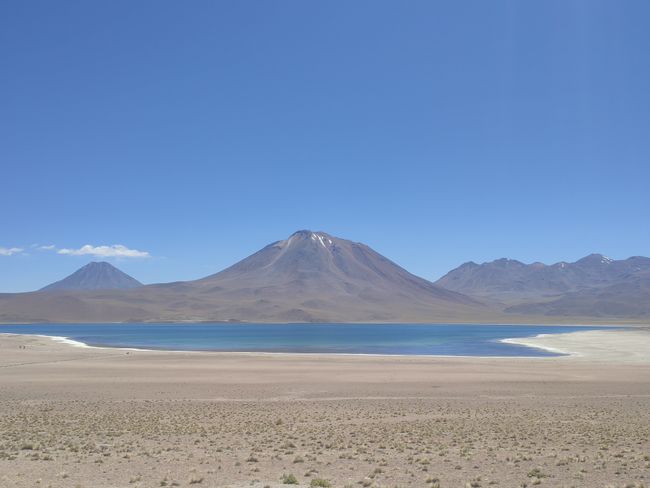
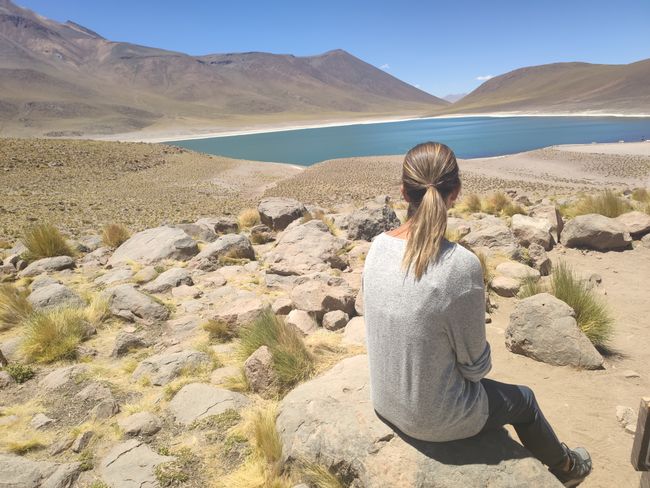
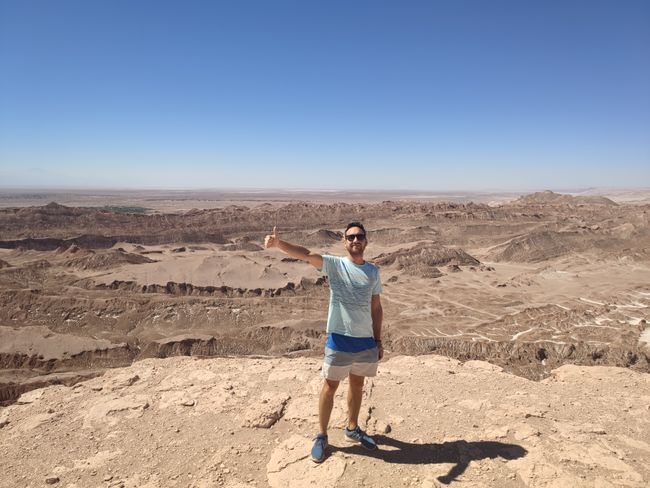
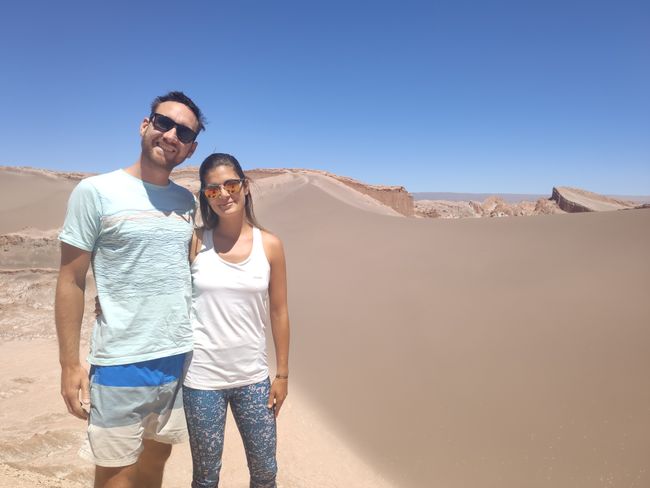
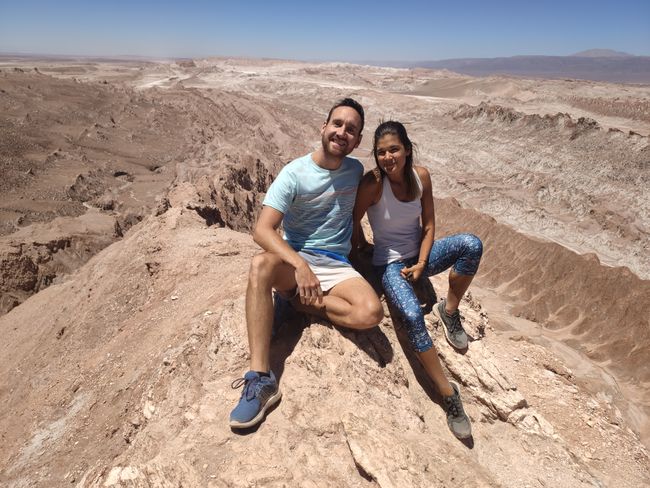
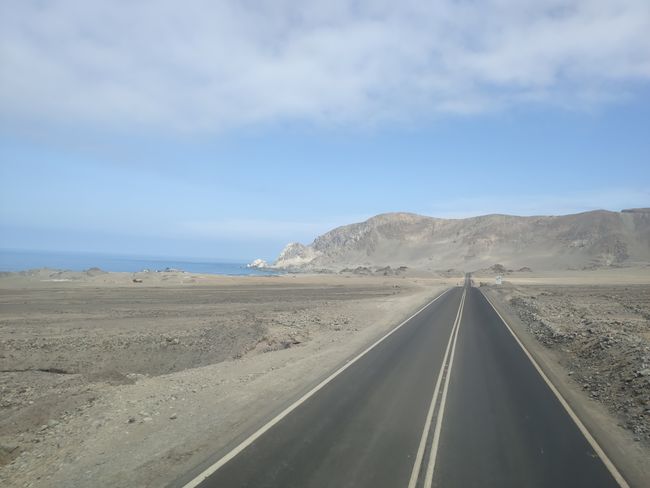
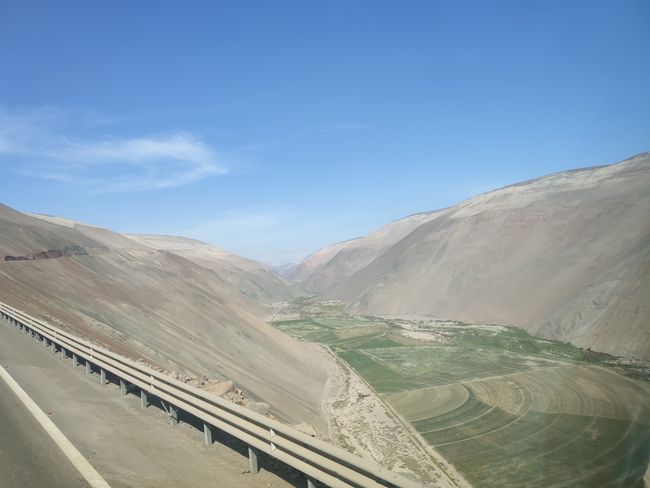
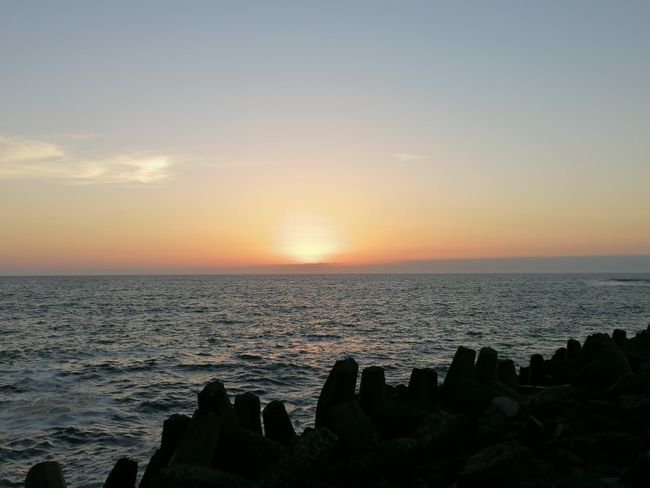
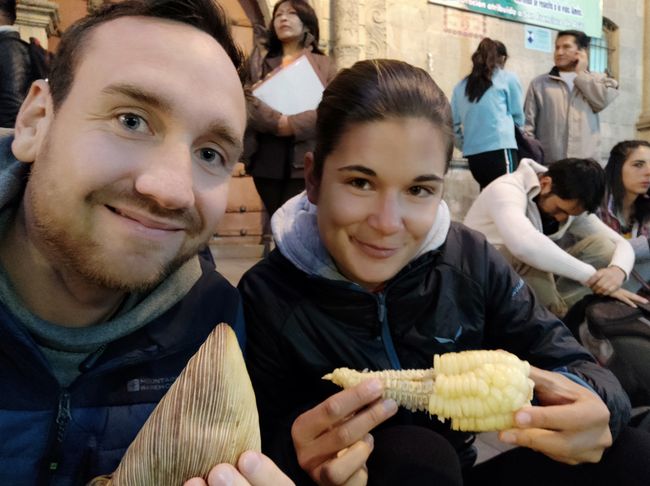
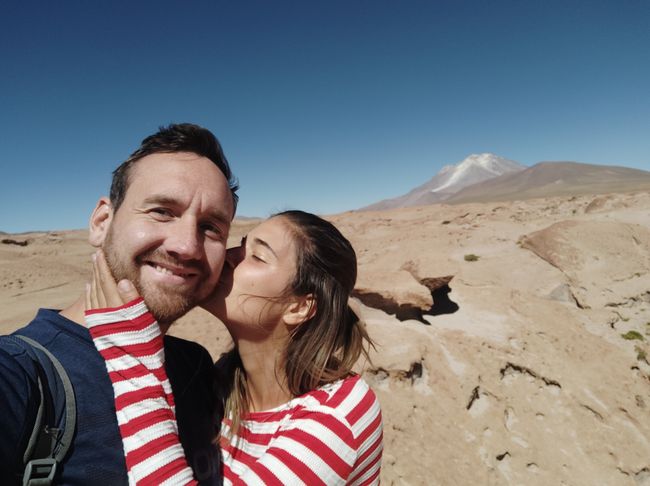
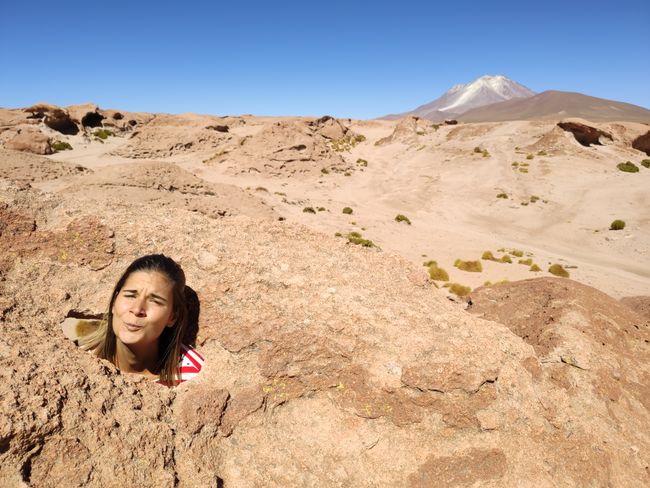
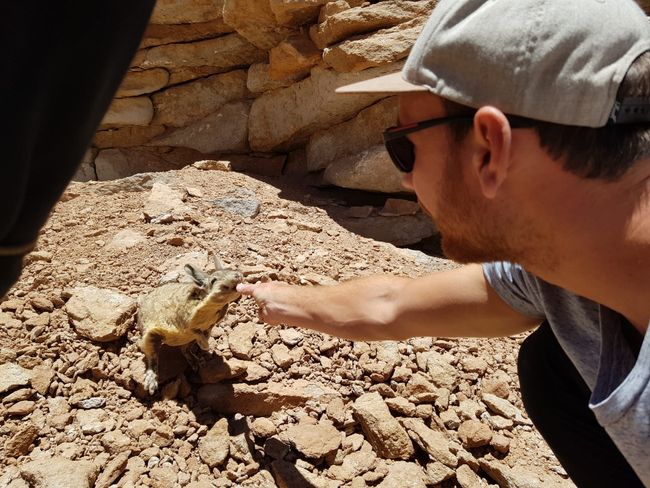
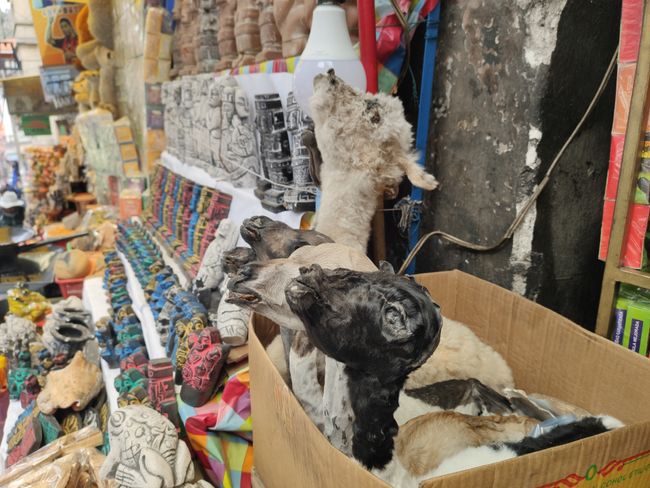
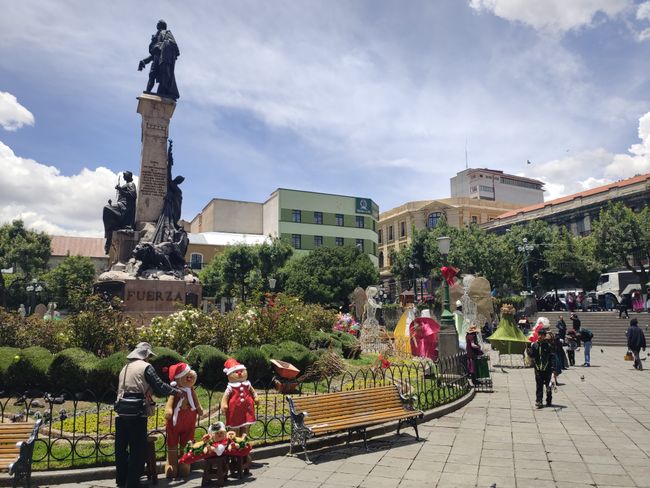
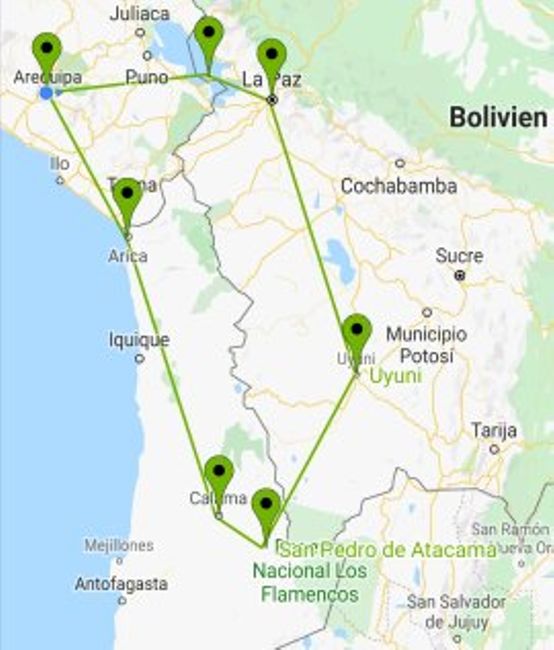
Fa'asoa ile Newsletter

After a relaxing week in Arequipa, where we could recharge our travel batteries and finally do all our laundry, we set off on our next adventure: the salt flats in Bolivia and the Atacama desert in Chile. After not being able to enter Bolivia in November due to a strike, we decided to try again a month later. Our journey to Bolivia this time also didn't go without a hitch.
A short story about it: In Copacabana (Bolivian side of Lake Titicaca) we were told that we could enjoy a short stay there and the bus would continue at 1:30 pm. Slightly annoyed by this surprising information, we tried to pass the time by walking around and having lunch. Just before 12:30 pm we returned to the bus stop and were surprised to see the passengers already waiting there. We decided to spend the remaining hour in the park around the corner - it's a thousand times more pleasant than waiting on the sidewalk, right? Shortly before 1:00 pm, a moment of shock. Jürgen saw a bus leave that looked like ours in color and design. Uncertain, we ran to the bus stop - there was no one there anymore. Only our two large backpacks were left in the waiting room. Slightly upset, we asked the lady from the bus company how the bus could simply leave early?! When we compared the time on our watches, we were speechless: time change one hour ahead - oh great!!! With her helpfulness and competence, the lady still managed to reach the bus driver by phone and stopped a random car with which we tried to catch up with the bus. The driver managed to catch up and, after consulting us, she didn't want a single Bolivian for her heroic act. An early Christmas present 😊
After another 5 hours on the bus and crossing a river on a motorized raft, we reached our first destination - La Paz, the city with the world's highest seat of government at 3,600 m.
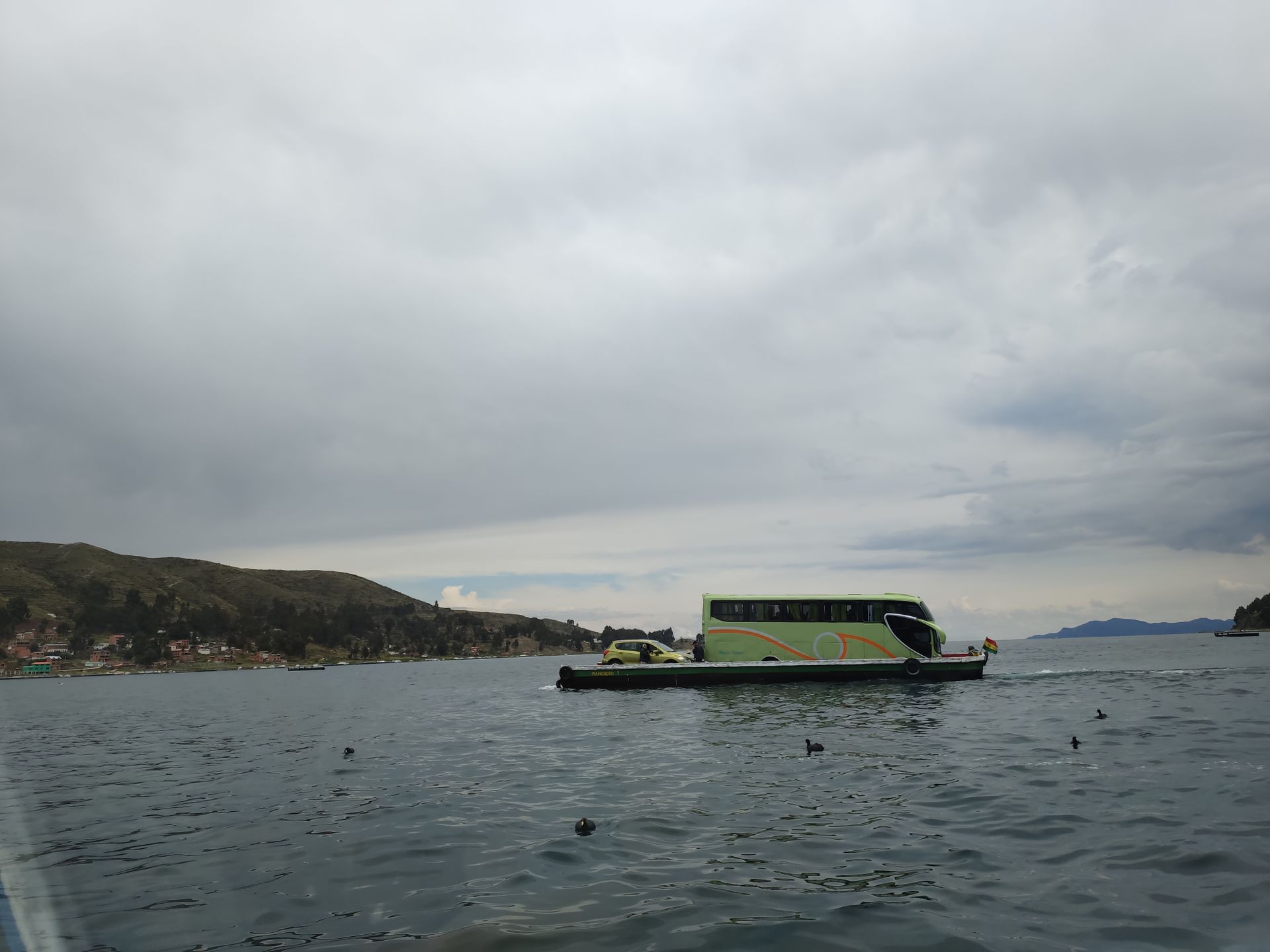
The most remarkable thing about this metropolis is its location in the middle of the mountains with very steep streets, where houses are built in all possible and impossible places. In order to improve mobility and thus the quality of life for the people, the largest urban cable car network in the world, with a length of over 30 km, was put into operation in 2014. The total of 10 cable cars not only connect various neighborhoods, but also La Paz with its now independent neighboring city El Alto, which is located at over 4,000 m. A total of 1.6 million people live in the two merged cities, which create a very special atmosphere. The high proportion of indigenous population with their traditional clothes is noticeable, as well as the originality and simplicity that prevail in this city. This original way of life is mainly due to the high poverty. Masked shoe polishers (who do not want to be recognized due to their low activities and young age) and countless begging children made us feel concerned and made us aware of how poor this country is compared to most other South American states. We saw children as young as 4 years old selling various little things alone on the street to contribute to the "necessary" family income. Especially in the pre-Christmas period, this sight clouded our mood. Here, you would like to help everyone financially.
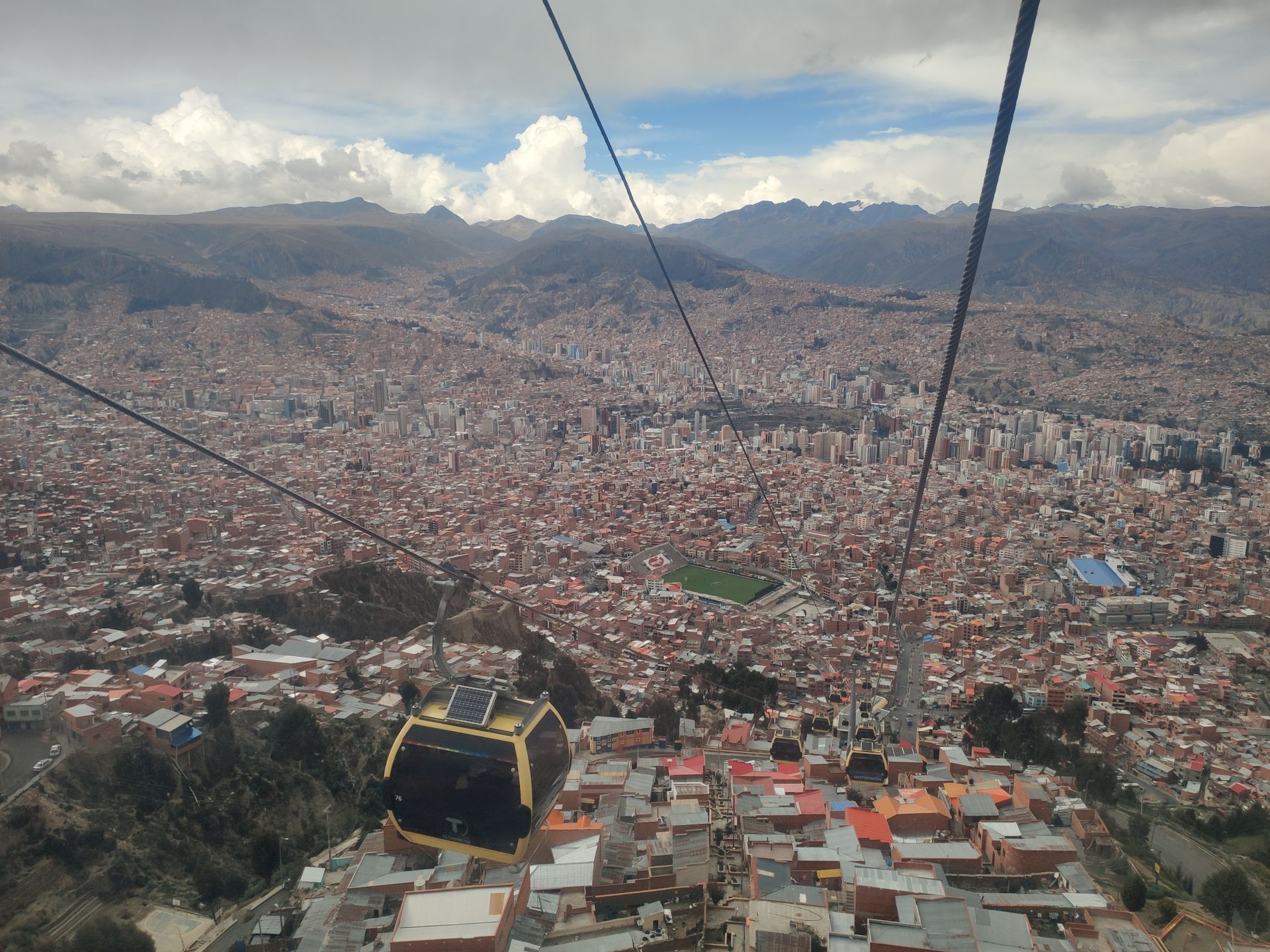

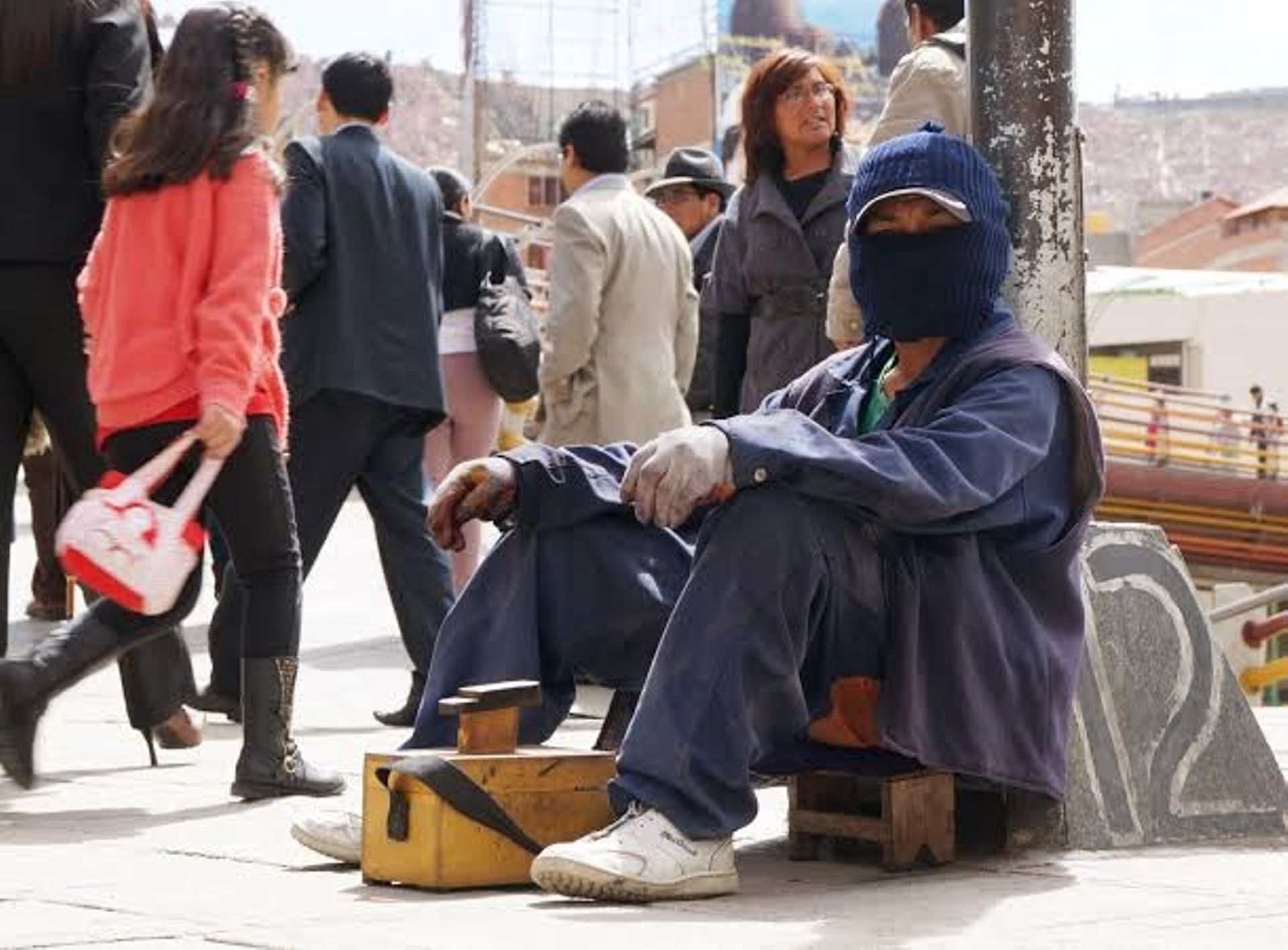
Our feeling would say that the countries Peru and Colombia and even Ecuador are more advanced in their development and have a better social system. In addition, there has been a tense political situation in Bolivia for more than 1.5 months. The constant conflicts between indigenous and non-indigenous population divide the country, which in all likelihood has a difficult future ahead of it.
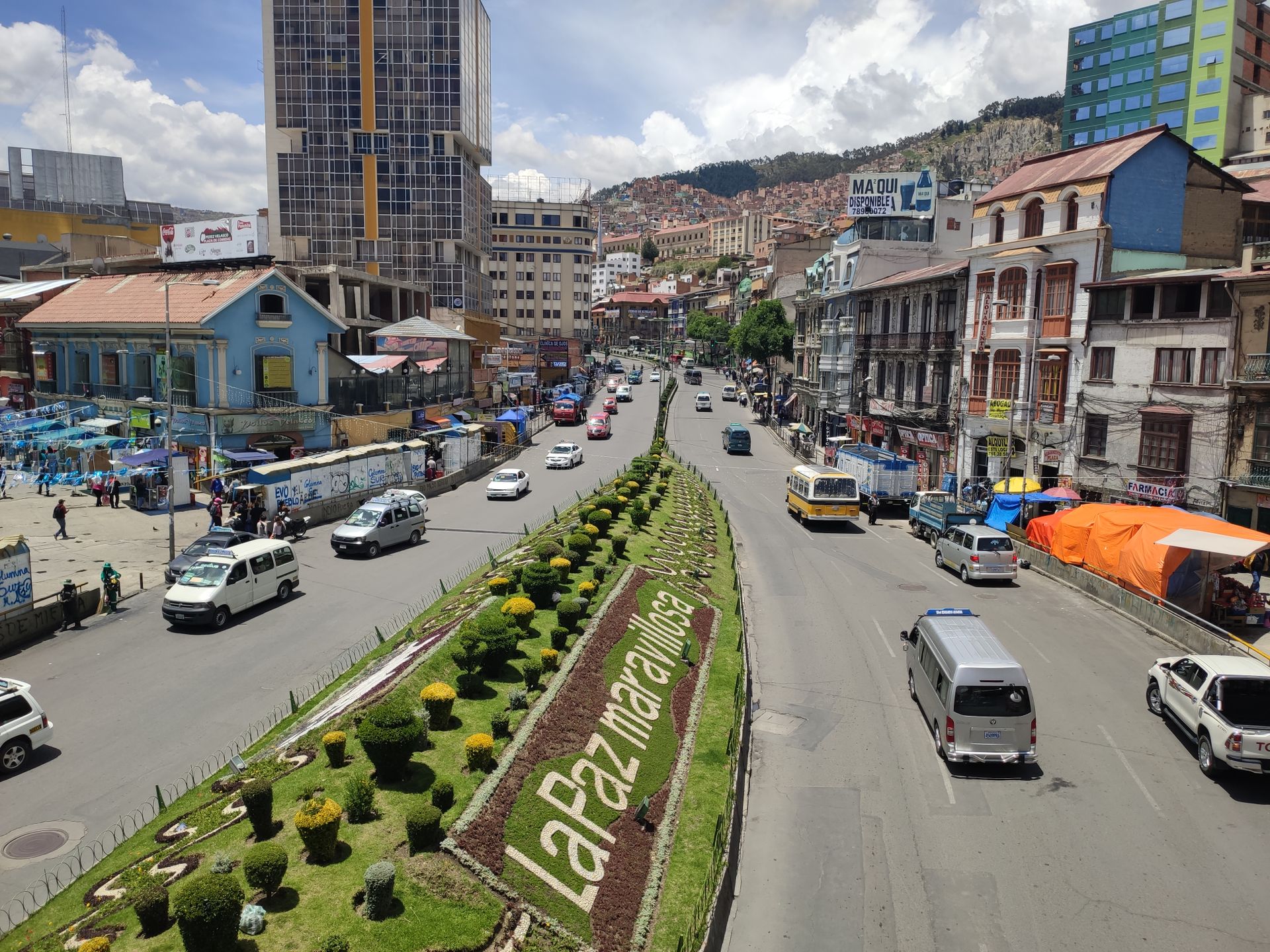
Aside from sightseeing, we took two unforgettable trips into the green. The first one took us near the edge of the "Death Road". We biked down 3,000 meters (just downhill) on the formerly most dangerous road in the world, the "Camino de la Muerte" alias 'Death Road'.
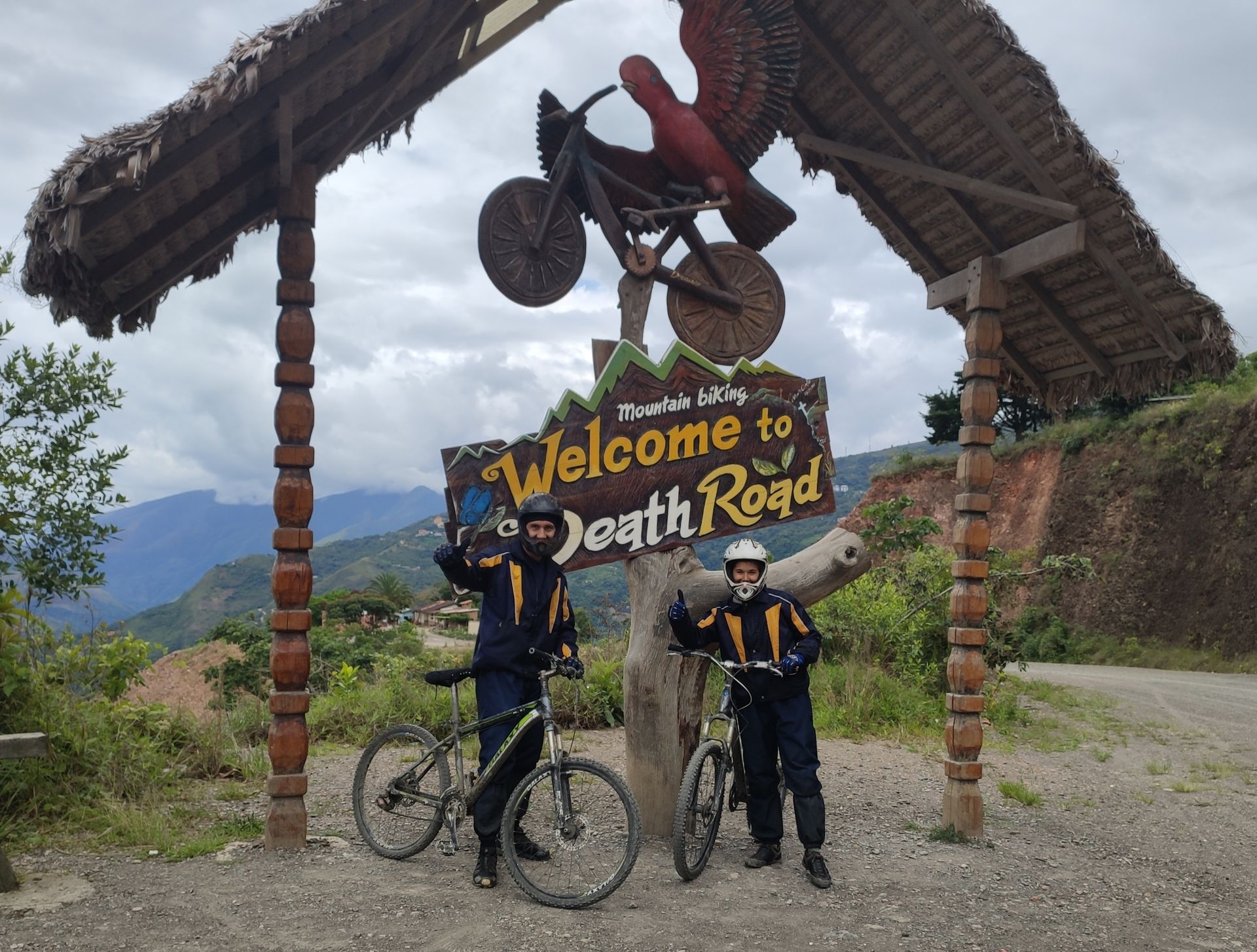
Until 2007, this narrow and steep gravel road was used as a two-lane traffic route. The name is not by chance, as this road had an average of 209 accidents and 96 deaths per year. Nowadays, there are other connections to the Amazon region in the north and this route is rarely used by cars, but mostly by cyclists who don't want to miss out on this unique experience, just like us. We can tell you... after 80 km on a bumpy road with a poorly suspended mountain bike, we were definitely shaken up and the muscle ache didn't take long to appear. We will remember this bike tour not only because of the initial cold (Note from the female editor: FREEZING cold!) and wetness, which initially dampened Martina's mood.
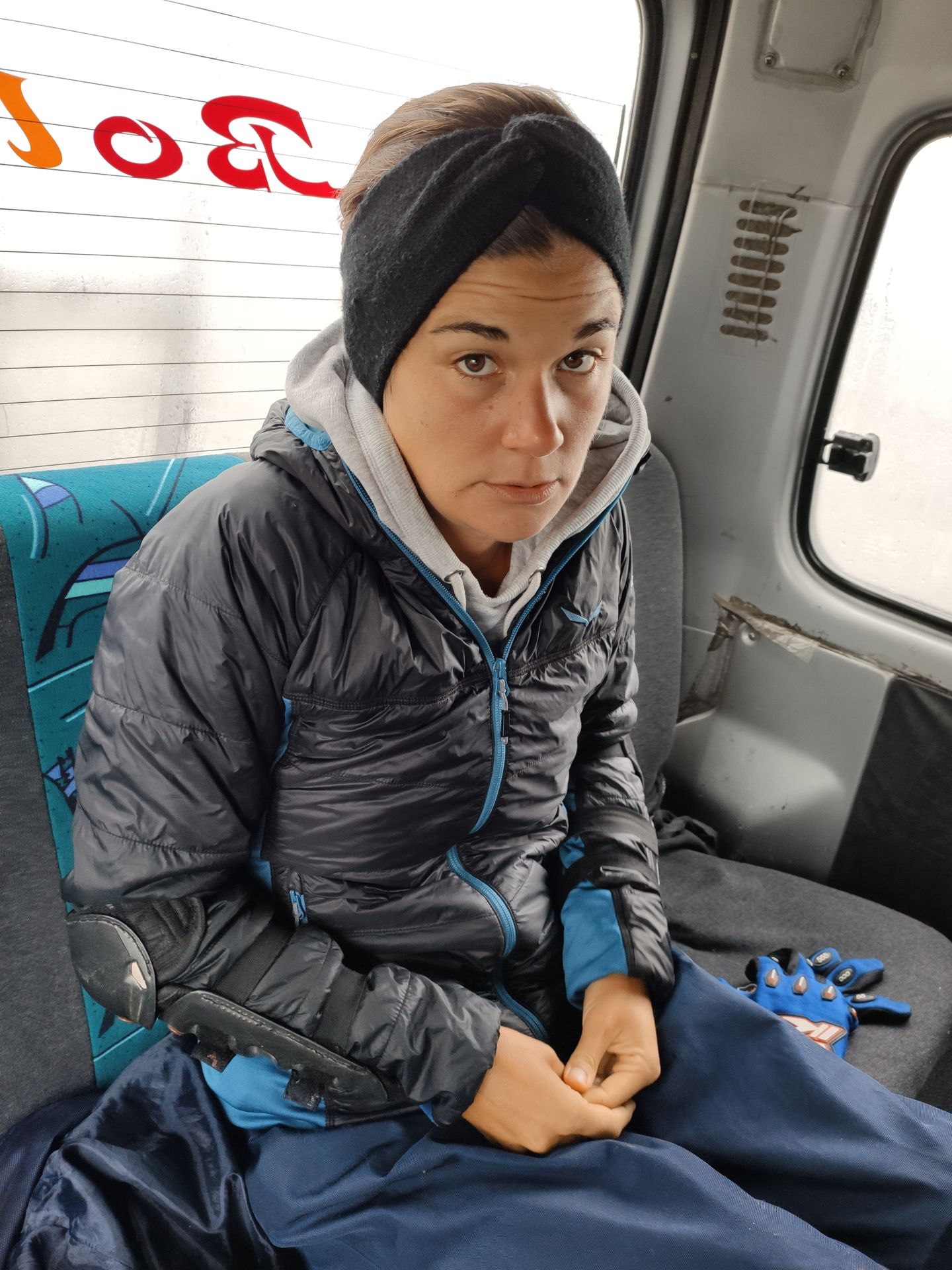

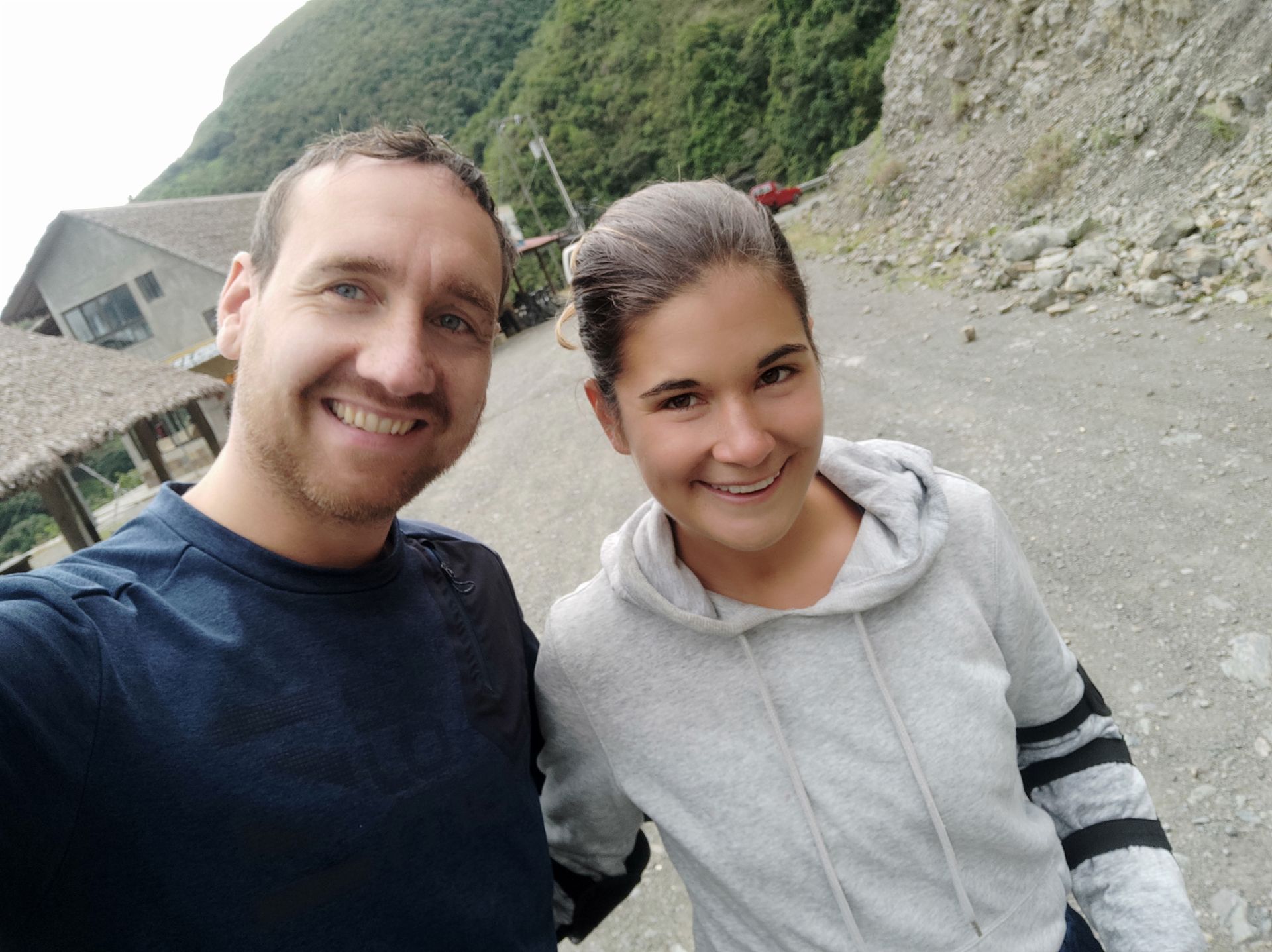
The panorama during this ride was truly unique. Especially the different forms of vegetation along the 3,000 meters of altitude and the view of the jungle landscape were spectacular. An adventure of a very special kind.

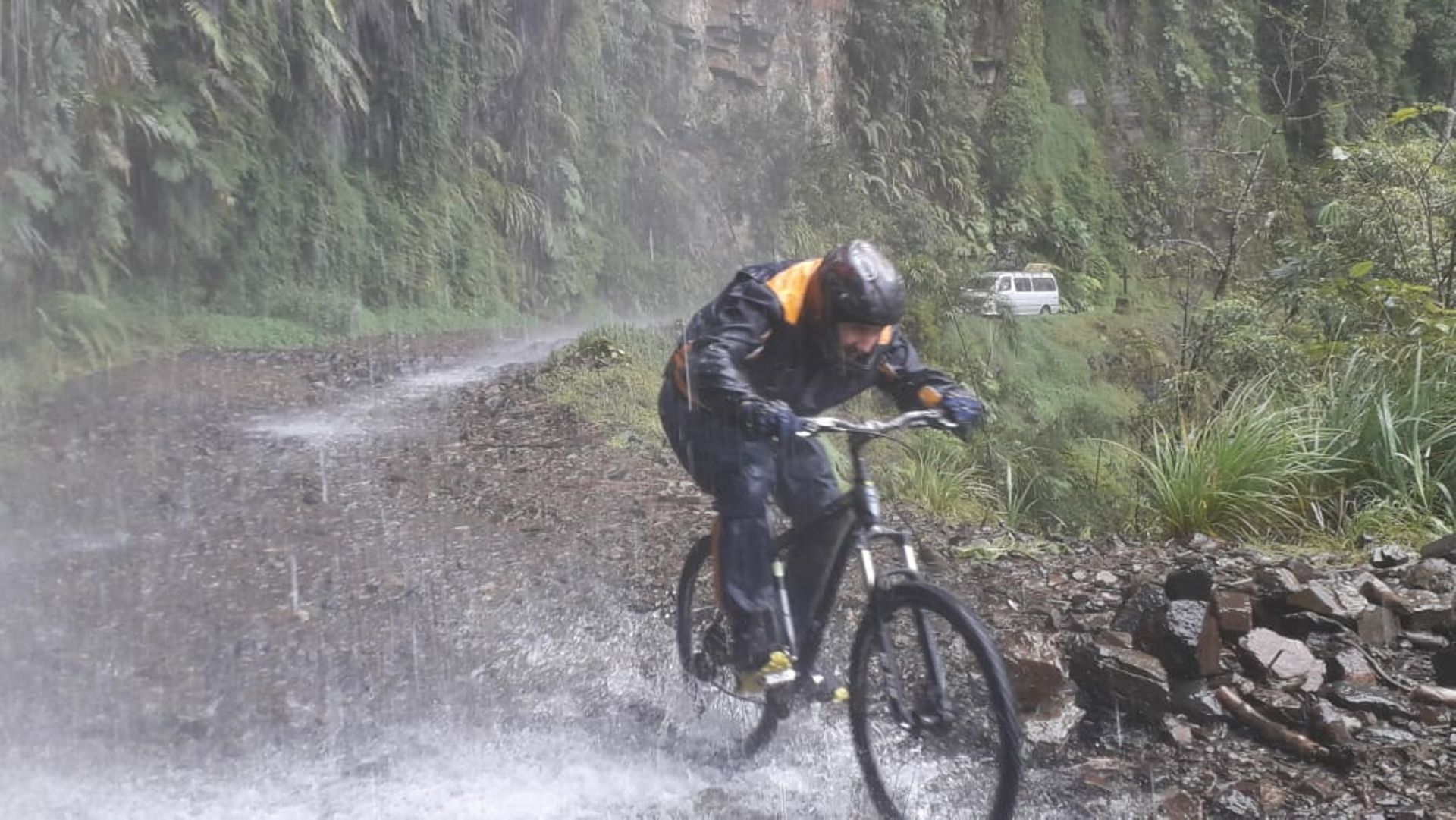
As a second and in retrospect equally impressive excursion, we took a hike to the nearby mountain "Pico Austria". Not only because of its name (first climbed by an Austrian), but also because of the allegedly beautiful panorama, we decided to do this tour. Together with another couple (our roommates from Canada) and our guide (a Bolivian who was almost 70 years old), we set off. We would have liked to go at our own, faster pace from the beginning, but our fellow travelers seemed to be panting much more and our guide emphasized again and again how important it was to walk very slowly. At that time, we could not yet assess whether this recommendation was more for his sake or ours. After the altitude and steep terrain forced our companions to turn back, we finally set our own pace and our guide followed us with a clear distance. Already on the way up, we saw some beautiful lagoons, snowfields, and waterfalls. On the last ascent, we voluntarily slowed down as it became more difficult to breathe above 5,000 meters. We managed the last section well and were rewarded at the highest point at 5,350 m with the most beautiful view we had seen so far. An incredible 360-degree panorama that gave us mountaineers immeasurable feelings of happiness after this effort. For the descent, our guide had something very special in mind: simply go "direttissima" over scree fields to our minibus. Since we believed "if a 70-year-old can do it, we can too", we agreed and marched, slid, and tumbled down. In retrospect, it was a reckless and almost insane decision for the guide to take such a risk with tourists. He only said "Son profesionales"... a true spectacle - we loved it 😊

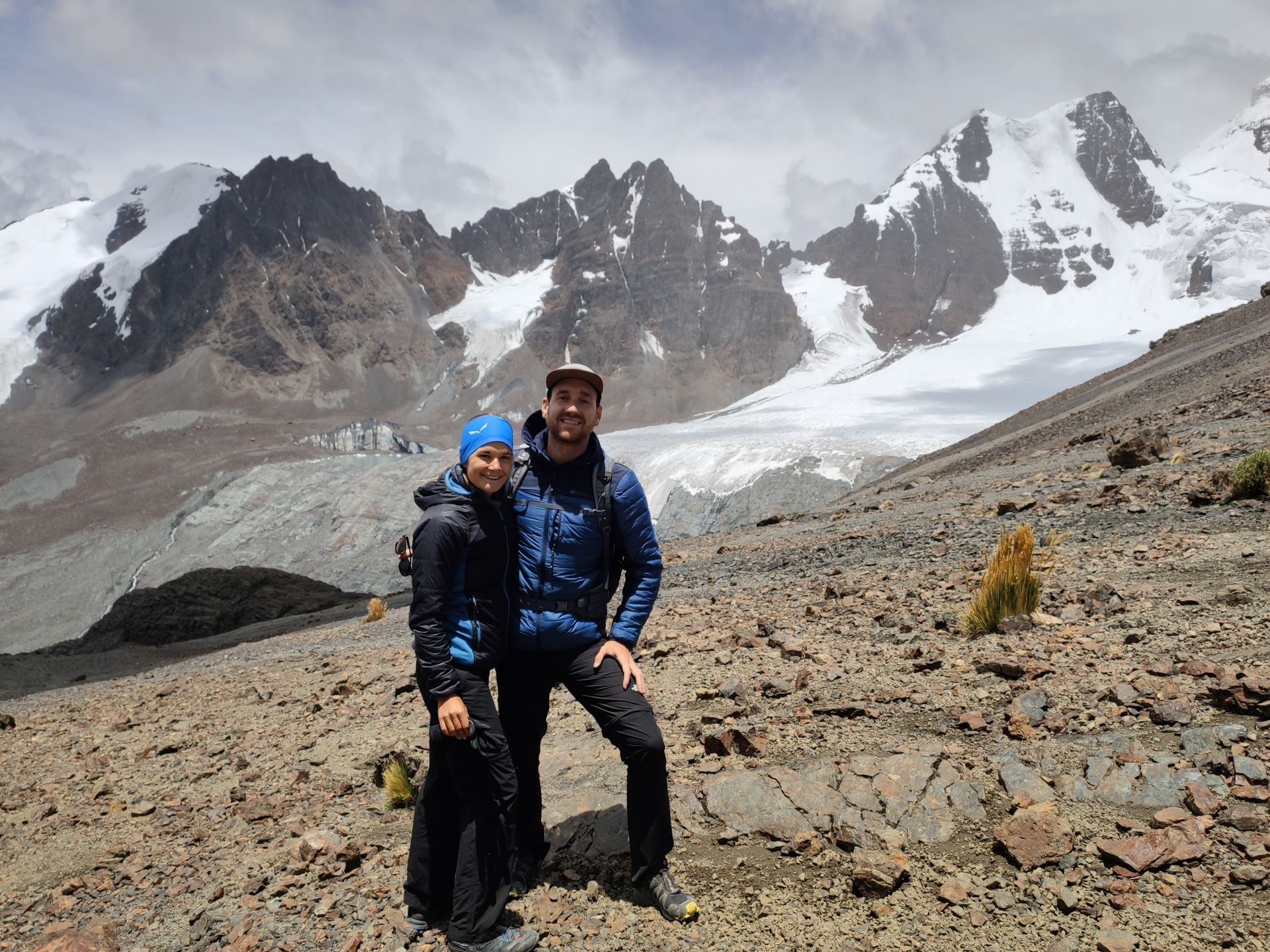

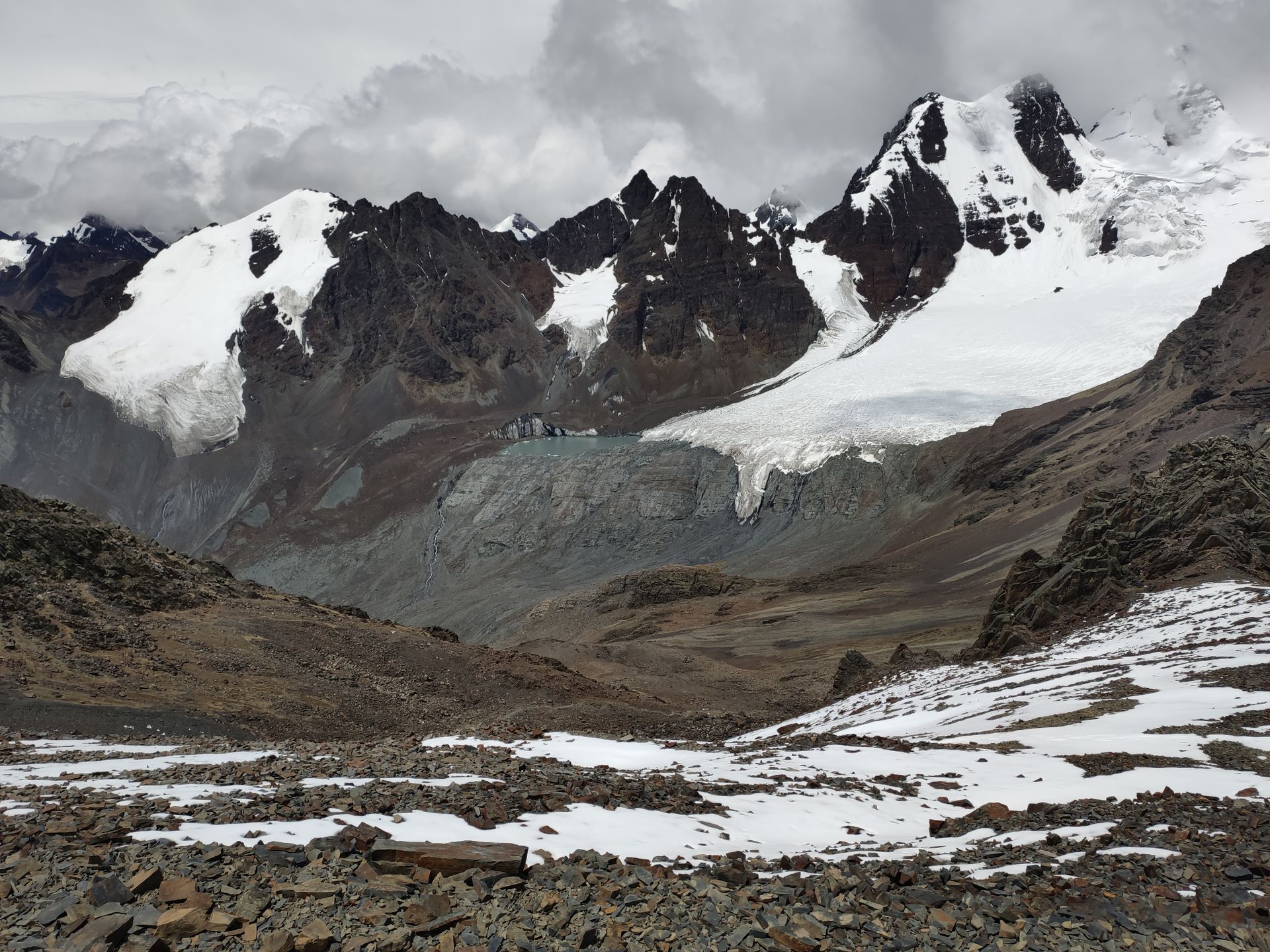
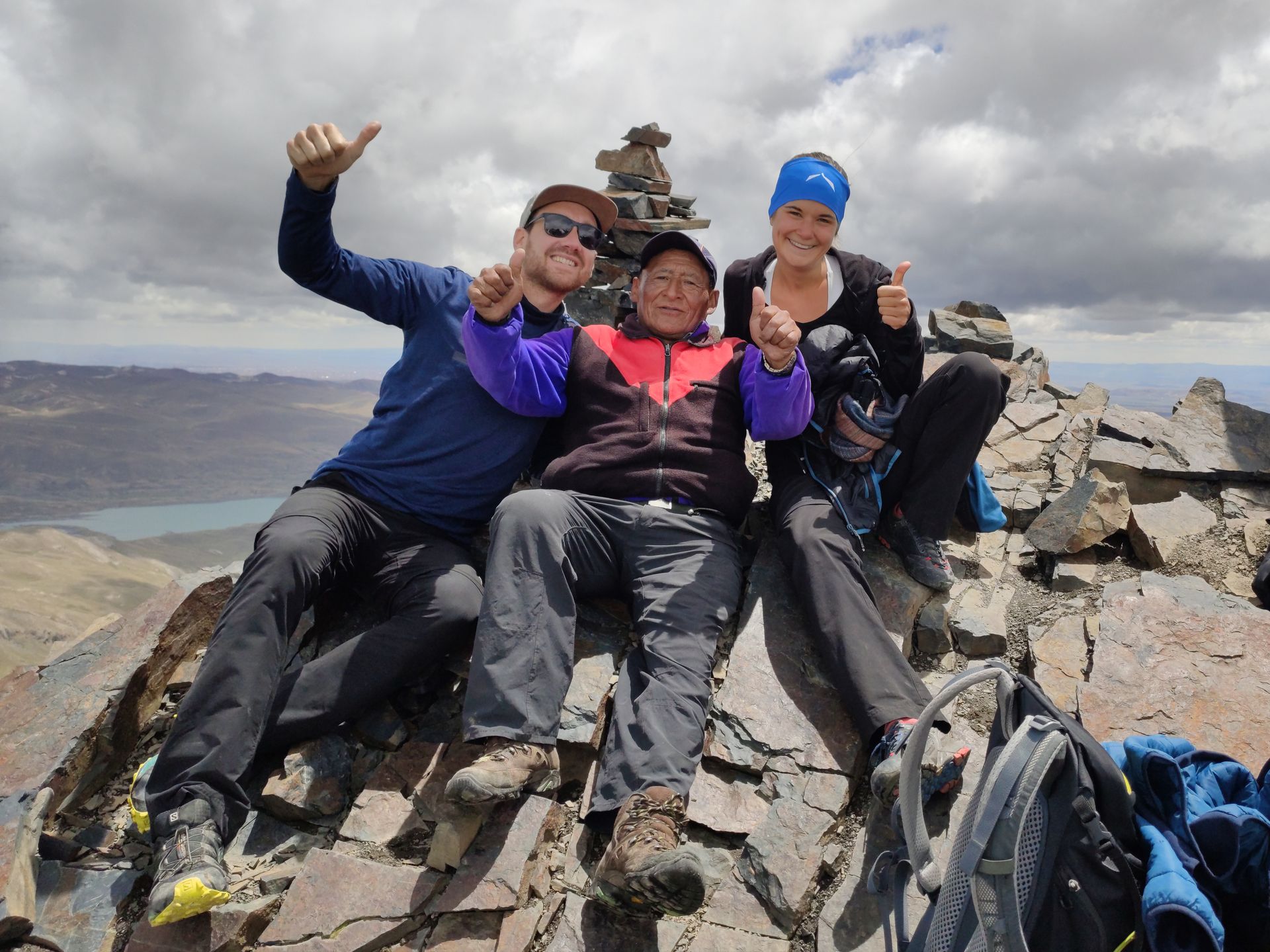
The next adventure was not long in coming - the 3-day tour through the deserts of Bolivia sounded promising to us. We took the overnight bus from La Paz to Uyuni and decided to look for a last-minute bargain on site to save our travel budget. Said and done, we managed to get two seats in a jeep with a guide and full board for the equivalent of 80 €. However, it soon became apparent that quality has its price. At the beginning, we noticed that our guide, who also drove our vehicle, was not organized and communication was not one of his strengths. Nevertheless, the price-performance ratio in our eyes was within the range and we enjoyed the first stops in the salt flats very much. Endless expanse and in all directions to the horizon, all you could see was white. The Uyuni salt flats (a dried-up saltwater lake) form the largest salt flat in the world with an area of over 10,000 km². Of course, the obligatory photos couldn't be missed here.

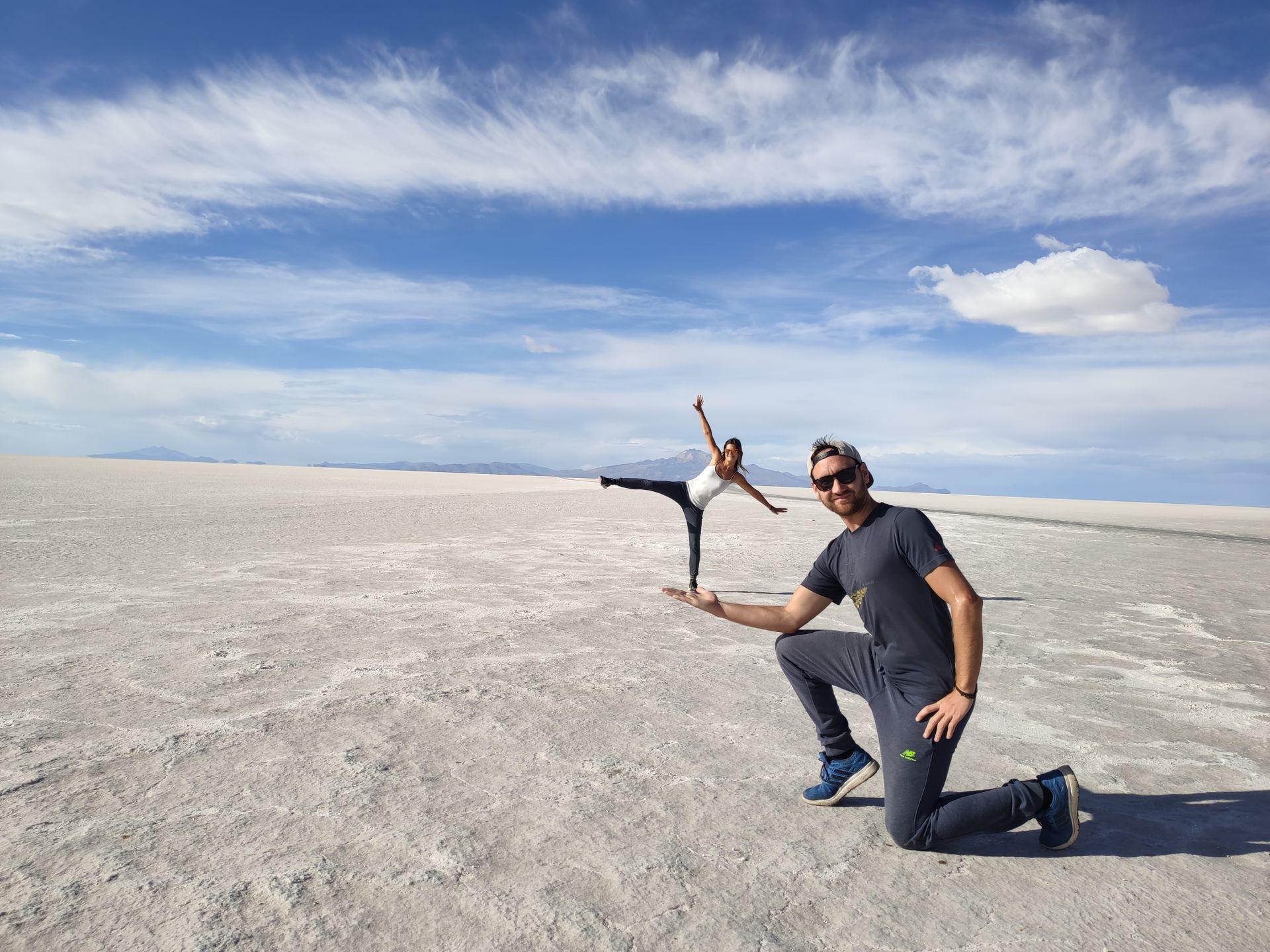
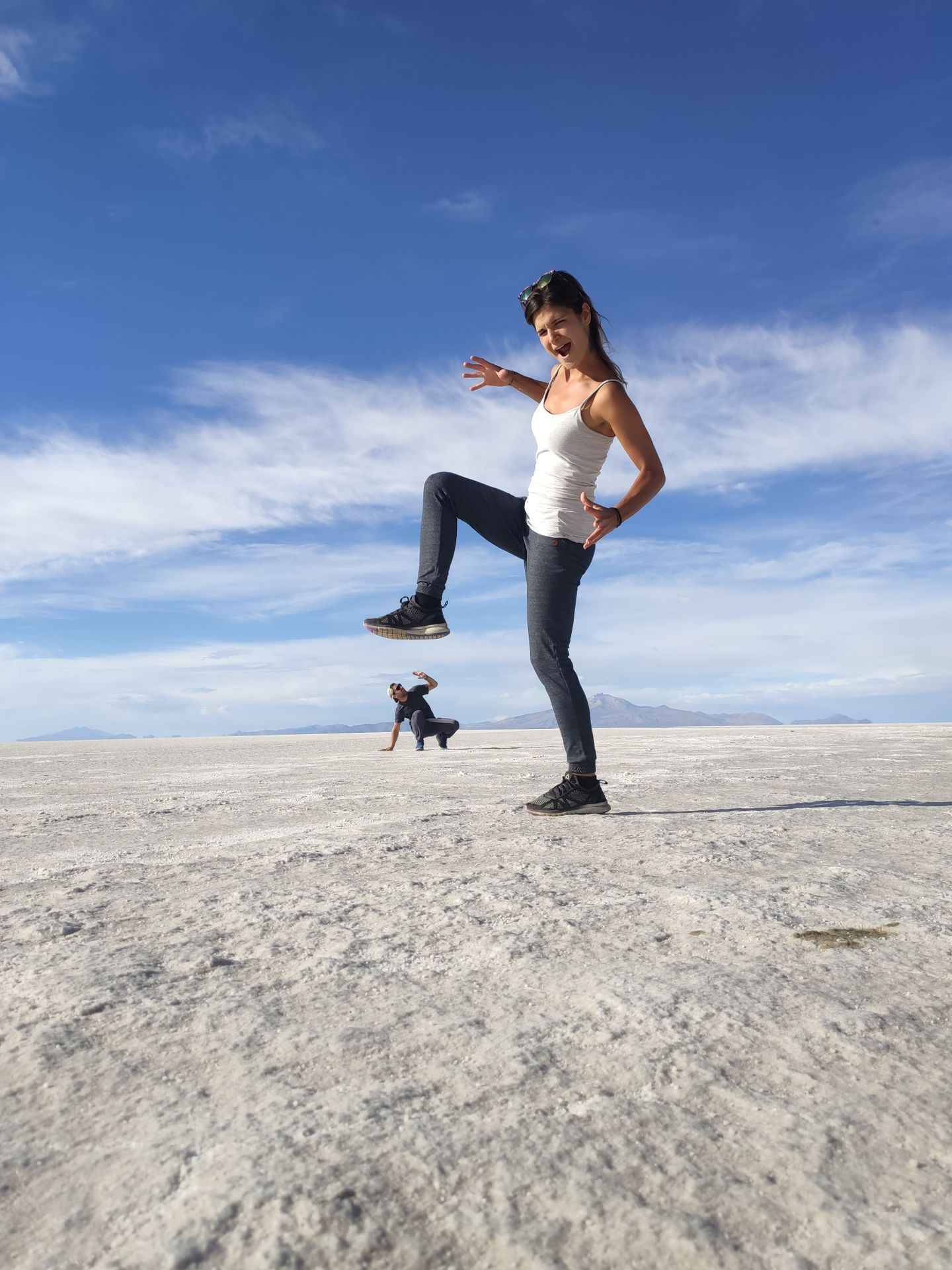
The next stop was the "Incahuasi" island. This is a hill with huge, countless cacti that were already thousands of years old. This little spot truly amazed us.
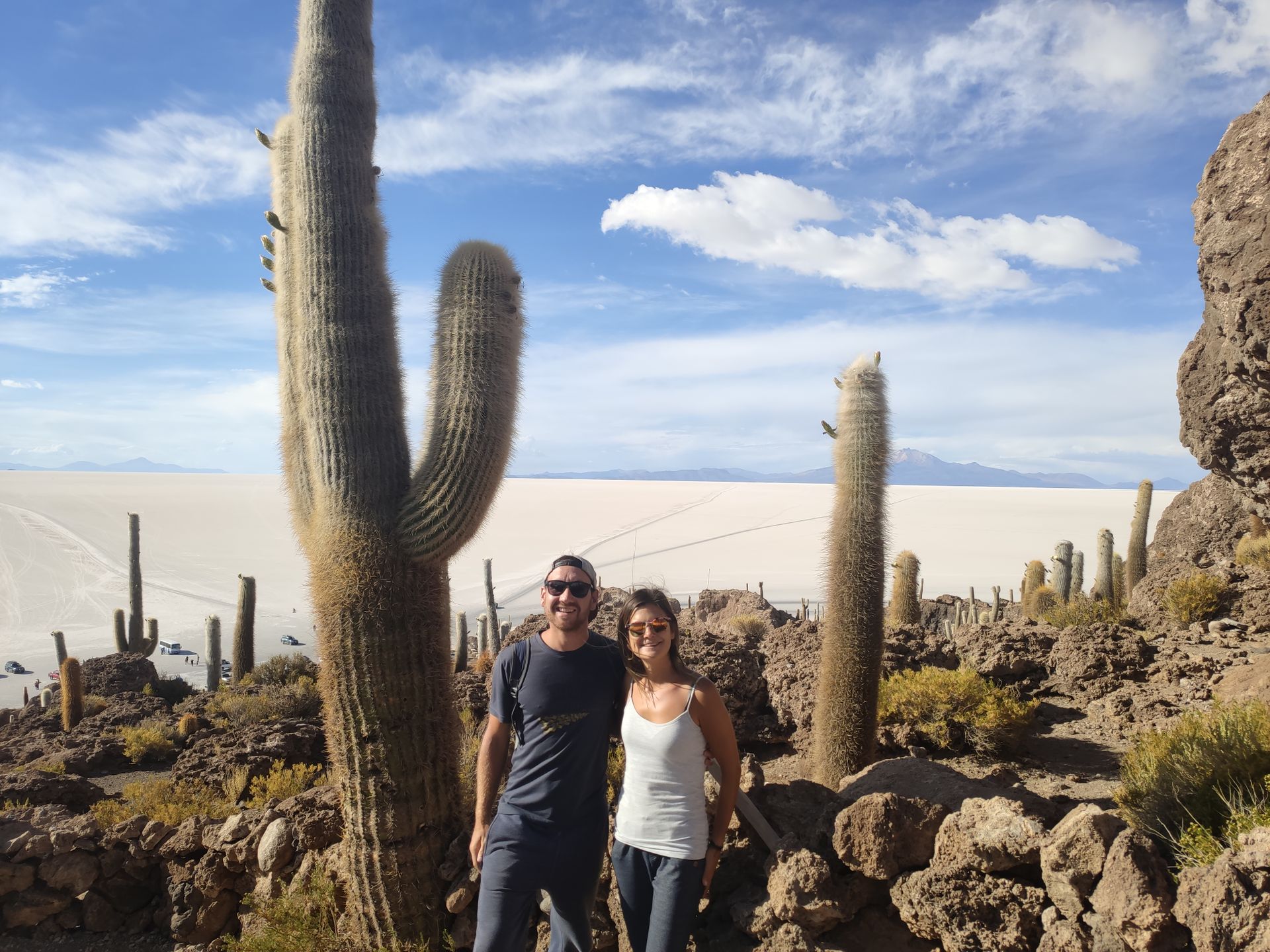
After this stop, our driver appeared again about 20 minutes late at the car for the next leg of the journey. When we realized that he smelled unusually alcoholic, we became suspicious and discussed it with two fellow travelers. Since the two girls from Italy and Spain shared our assessment, we felt confirmed in our assumption. The guy had a massive alcohol breath, and our feeling of annoyance turned into concern. Although a drive in the desert does not require the fastest reaction times, we still could not assess the driving ability of our driver. We got back in the jeep and anxiously continued our journey. As darkness fell, our energy level decreased. Unfortunately, our driver wasn't exempt from this fatigue. Suddenly, we veered off the road - a hysterical scream from all of us! He lost control and we rushed down a small embankment. We were lucky that our vehicle didn't overturn. Rested after his power nap, our driver was able to correct the car in time and continue the journey unharmed. With a heart rate of 160, we couldn't resist some unfriendly remarks towards our guide (and even in Spanish!). When our sleep powder claimed that he had intentionally driven down the embankment, his likability was finally reduced to zero and our heart rate approached 180. Due to the "excellent" organization, the car also did not have any windshield washer fluid, which we desperately needed due to the dust, poor headlights, and darkness. Our concerns "No vemos nada - we don't see (anything at all)" he played down with a "Tranquillo". Finally, we forced him to stop and he cleaned the windshield with our water. He commented on the much better visibility with a sobering "Now it's even worse". With a heart rate of almost 200, we continued on and after a few more eye-rubbing moments and head-slapping, we finally arrived safely and relieved at our accommodation in the middle of the desert. A very special hotel, because all the walls as well as the tables and stools as well as the beds and nightstands were made entirely of salt. After dinner, we admired the starry sky and fell into bed, completely exhausted.
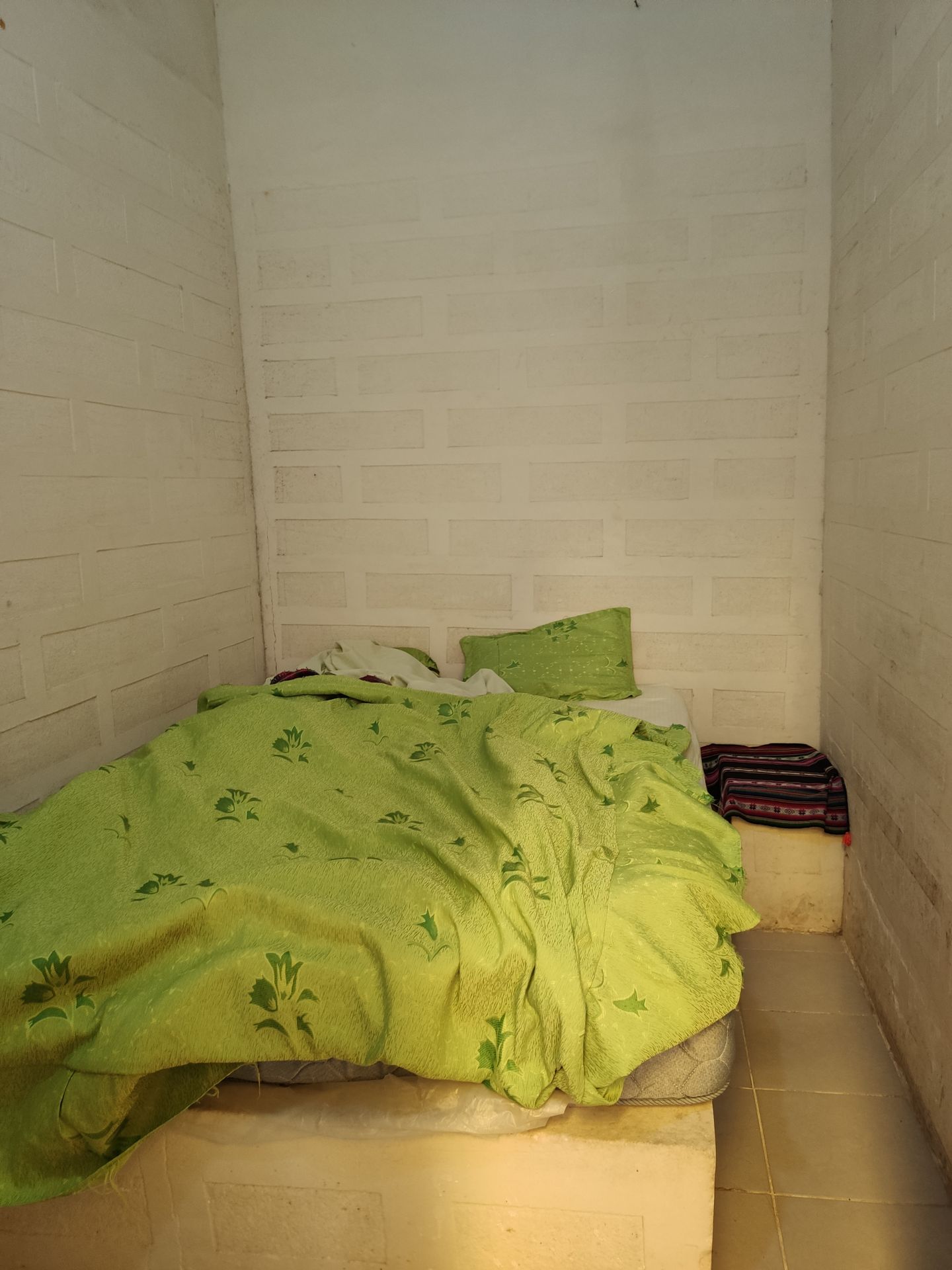
In the morning of the next day, we talked to our guide and were lucky to have two Spanish-speaking companions with us who addressed him about the incident. For South American standards, it is rather unusual to be so direct... we were aware of that, but it was completely irrelevant due to the seriousness of the situation. Contrary to our expectations, he admitted that he had consumed too much beer and had actually fallen asleep. He apologized several times and assured us that this would not happen again. Luckily, they were not just empty words: his behavior and driving style improved and we enjoyed the second day to the fullest. The highlights of this day were four lagoons that shimmered in different colors - from white to green to red and yellow. The splendor of colors was due to the amount of algae and minerals that took on different colors. The color play in the water was crowned by a multitude of graceful flamingos. A sight that burned itself into our memory - too picturesque to be true.
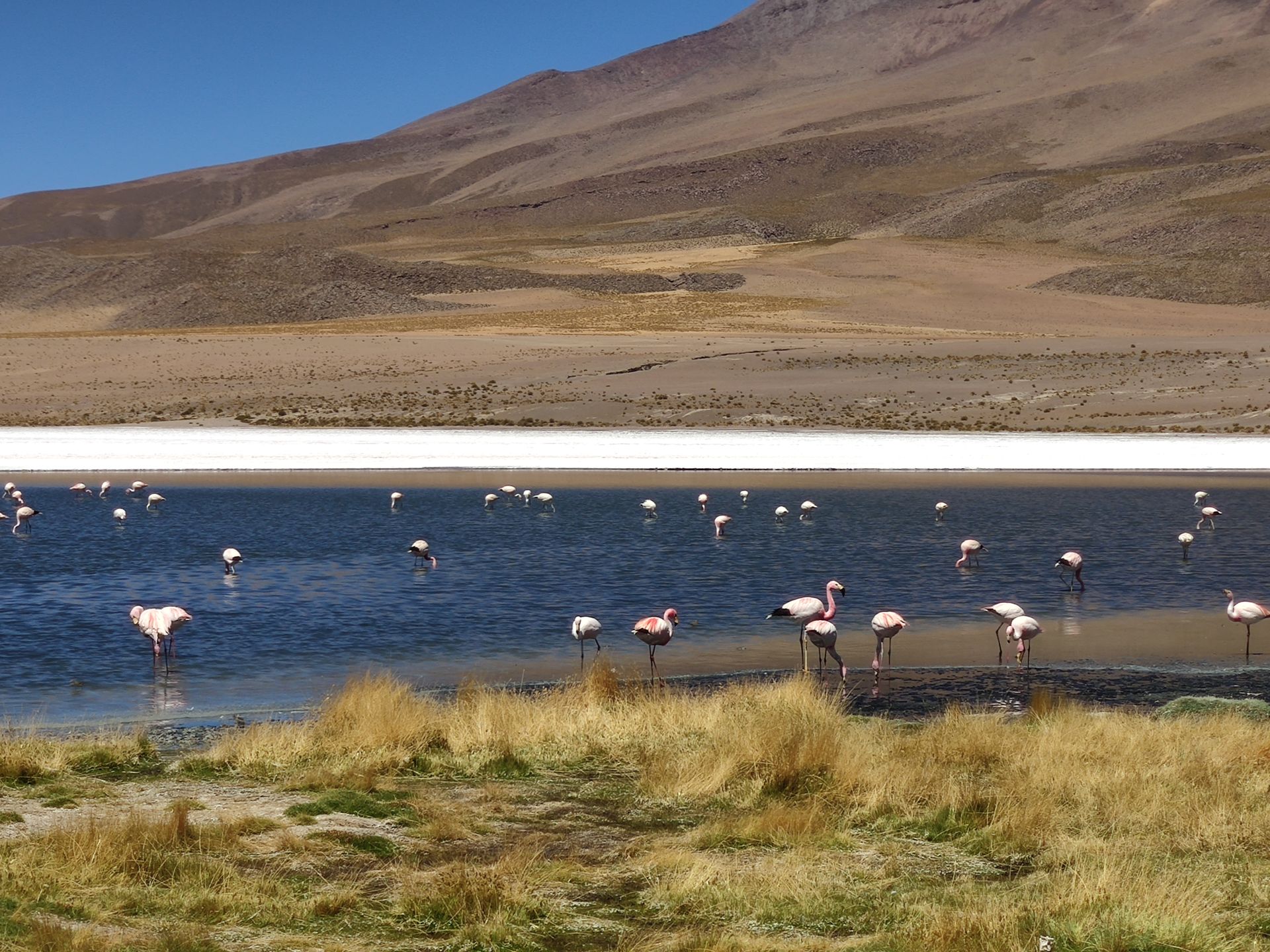


Day 3 of the desert tour took us to the "Sol de Manana" geysers at around 5,000 meters after waking up at 3:50 am. The fountains of water vapor shot up about 20 meters into the air and the bubbling in the mud pools was an extraordinary experience. When the sun rose, this natural spectacle reached a dimension of surrealism and we could hardly believe our eyes.
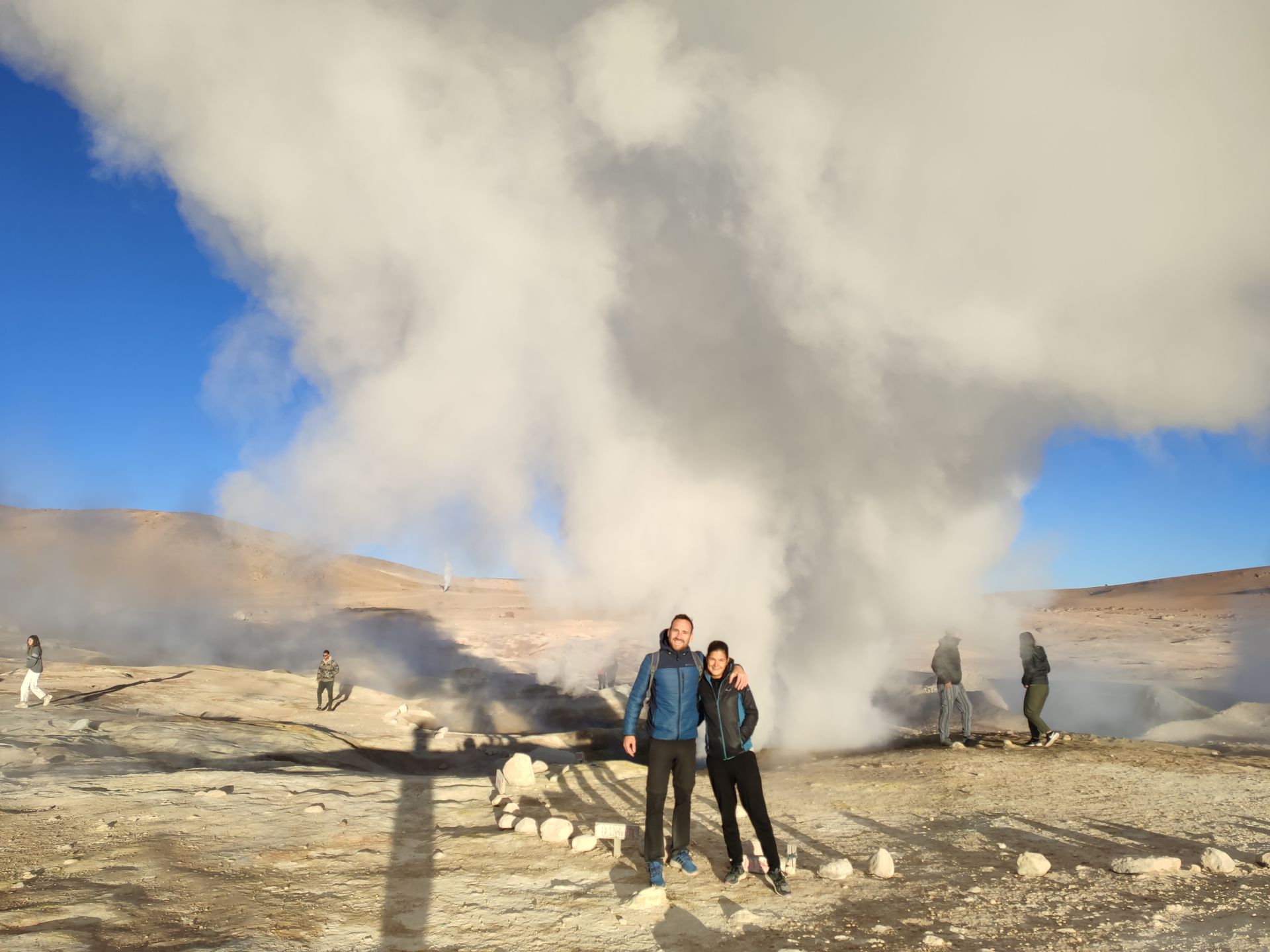
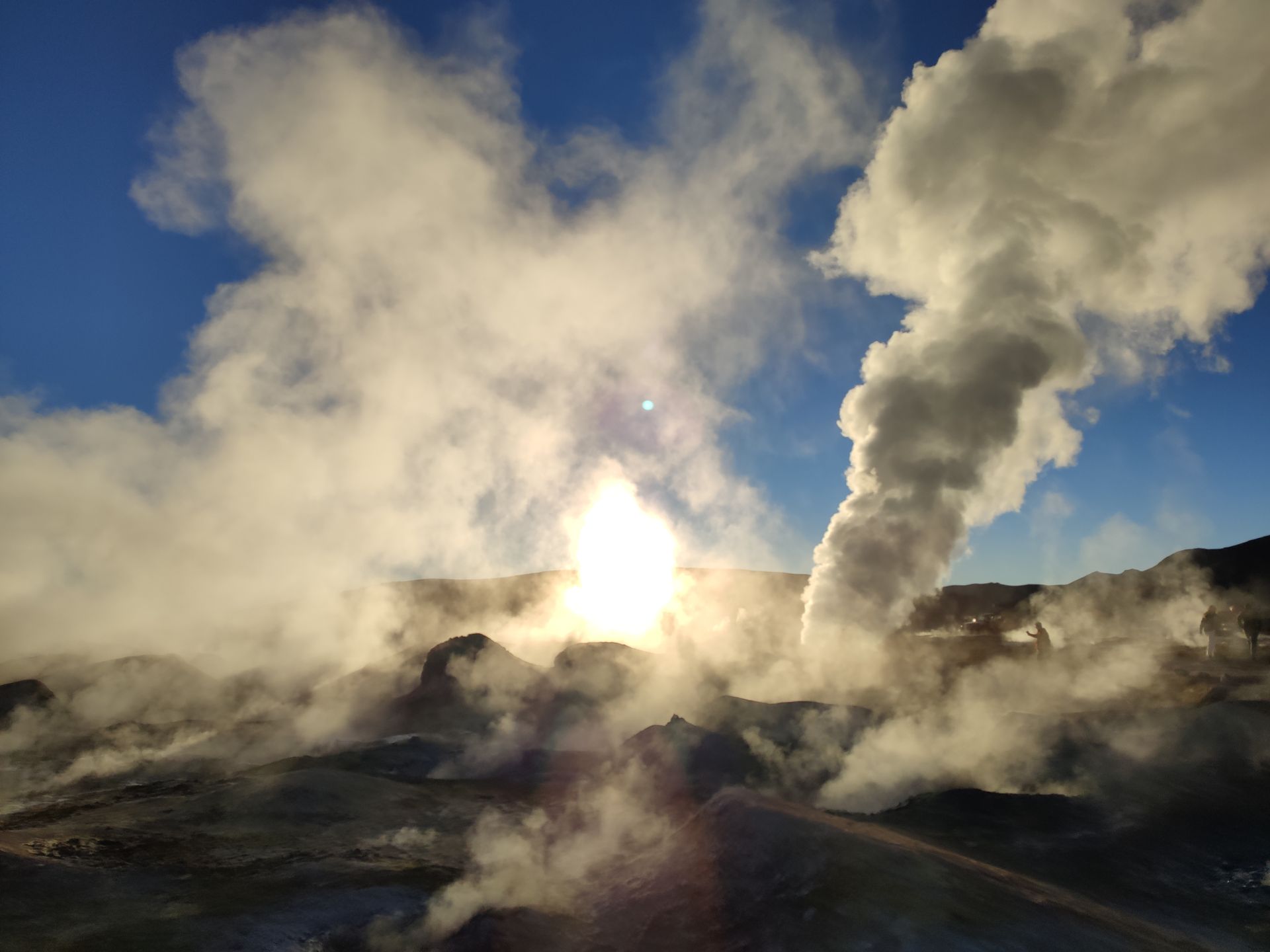
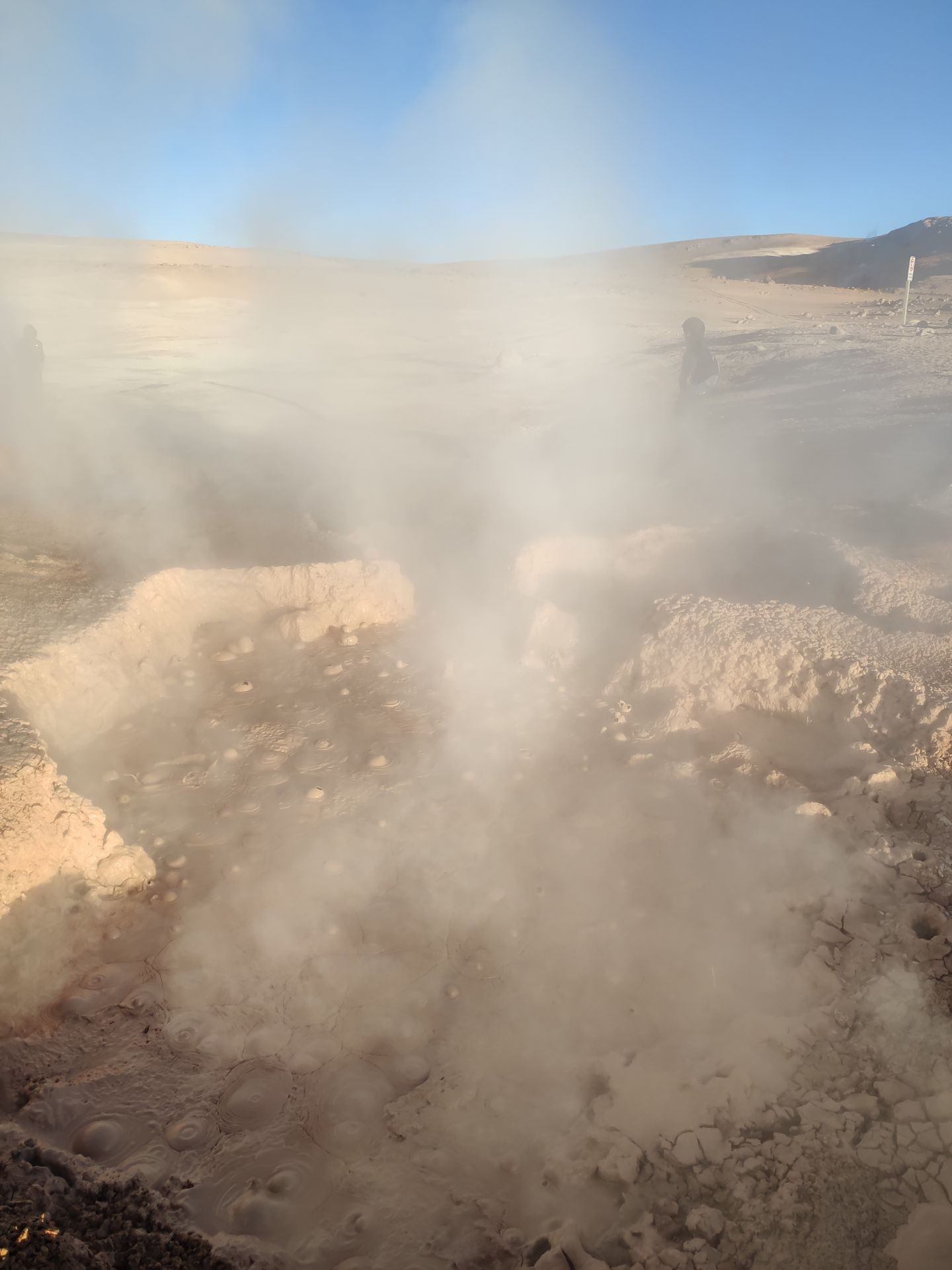
Finally, we had a soothing bath in the "Termas de Polques" before we drove to the Bolivian-Chilean border in the jeep.
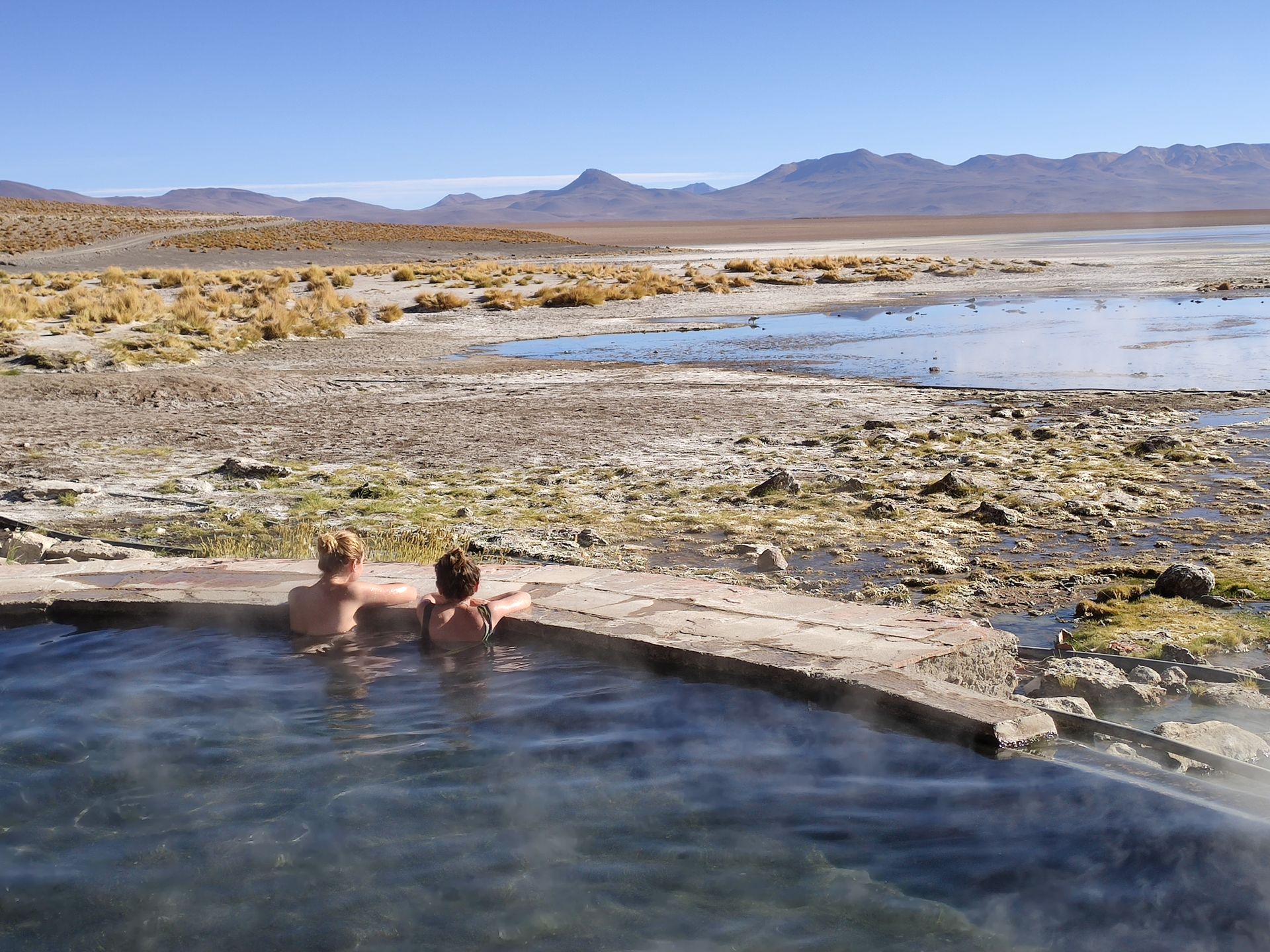
The entry into Chile went - apart from a very questionable fee (which is only charged to white people, there is no receipt, and the money definitely goes straight into the pockets of the border guards) and the confiscation of Martina's beloved carrots - quickly and without any problems.
Once we passed the Chilean border, we recognized a sense of structure in the traffic for the first time after 4 months of traveling, where you don't have to fear for your life when crossing the street as a pedestrian. Pedestrian crossings and traffic signs in Chile are not just there for decoration, but actually serve their purpose. Furthermore, it seems that Chile has less of a waste problem than the South American states we have visited so far. We were really happy about the significantly better infrastructure, hygiene, and order, but less about the increased price level. During our first stop in Chile in San Pedro de Atacama, we had to open our wallet wide for groceries at the market, just as we were used to back home. The price for accommodation also quadrupled compared to Bolivia, so we tried to get by as cheaply as possible. The prevailing prices, the courteous coexistence, and the appearance of the Chileans made us feel almost as if we had landed in a southern European country. A pretty strong contrast that we (except for the salty prices) enjoyed very much.
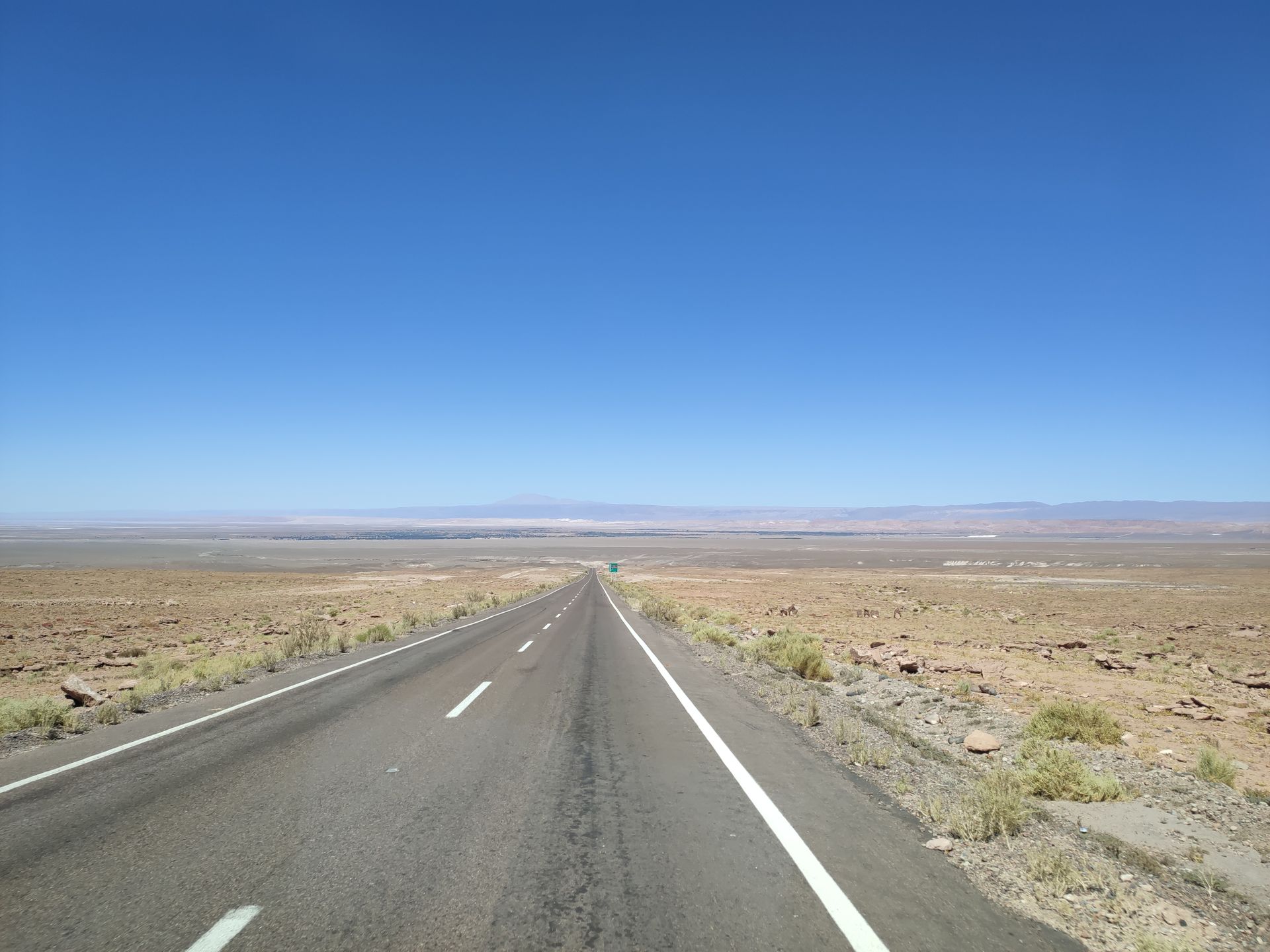
We spent the 4 days in San Pedro de Atacama a bit more relaxed and visited the surrounding areas with a rental car. As the Atacama Desert is considered the driest desert on earth, it is not surprising that there is little vegetation and hardly any animals to admire. Nevertheless, a lot of "nothing" can be very impressive and we enjoyed the independence of having our own car for exploration. See for yourself...
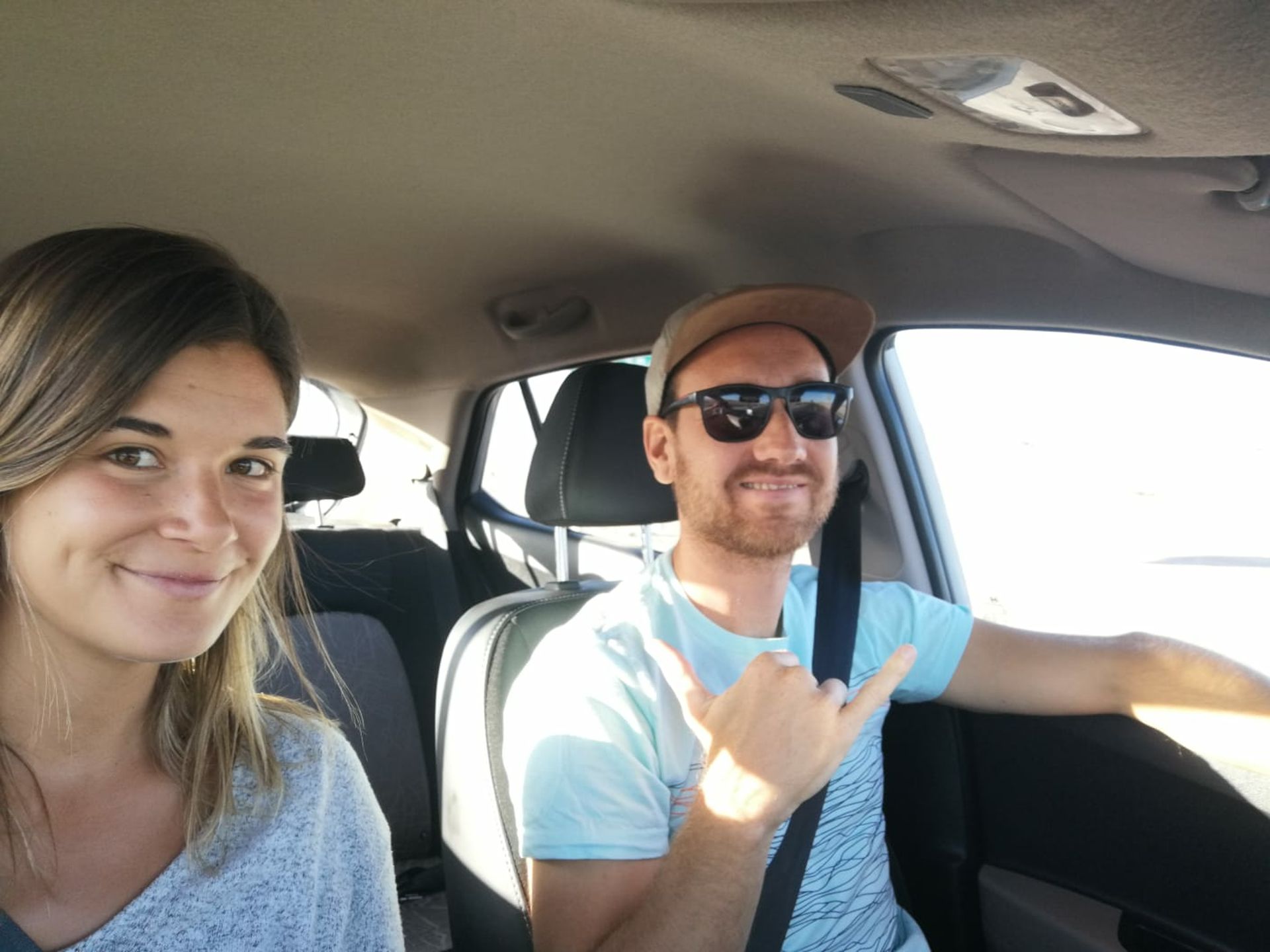
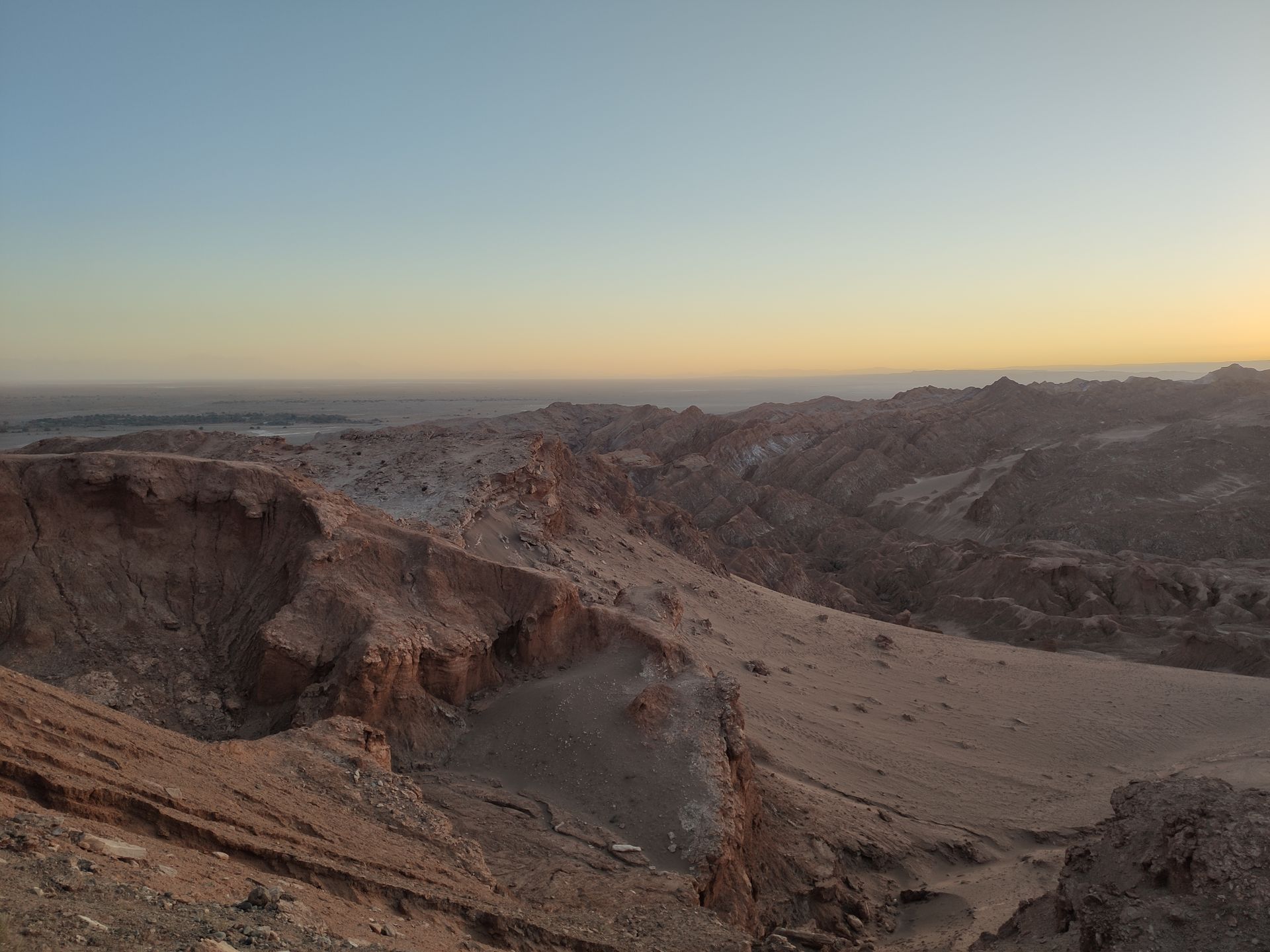


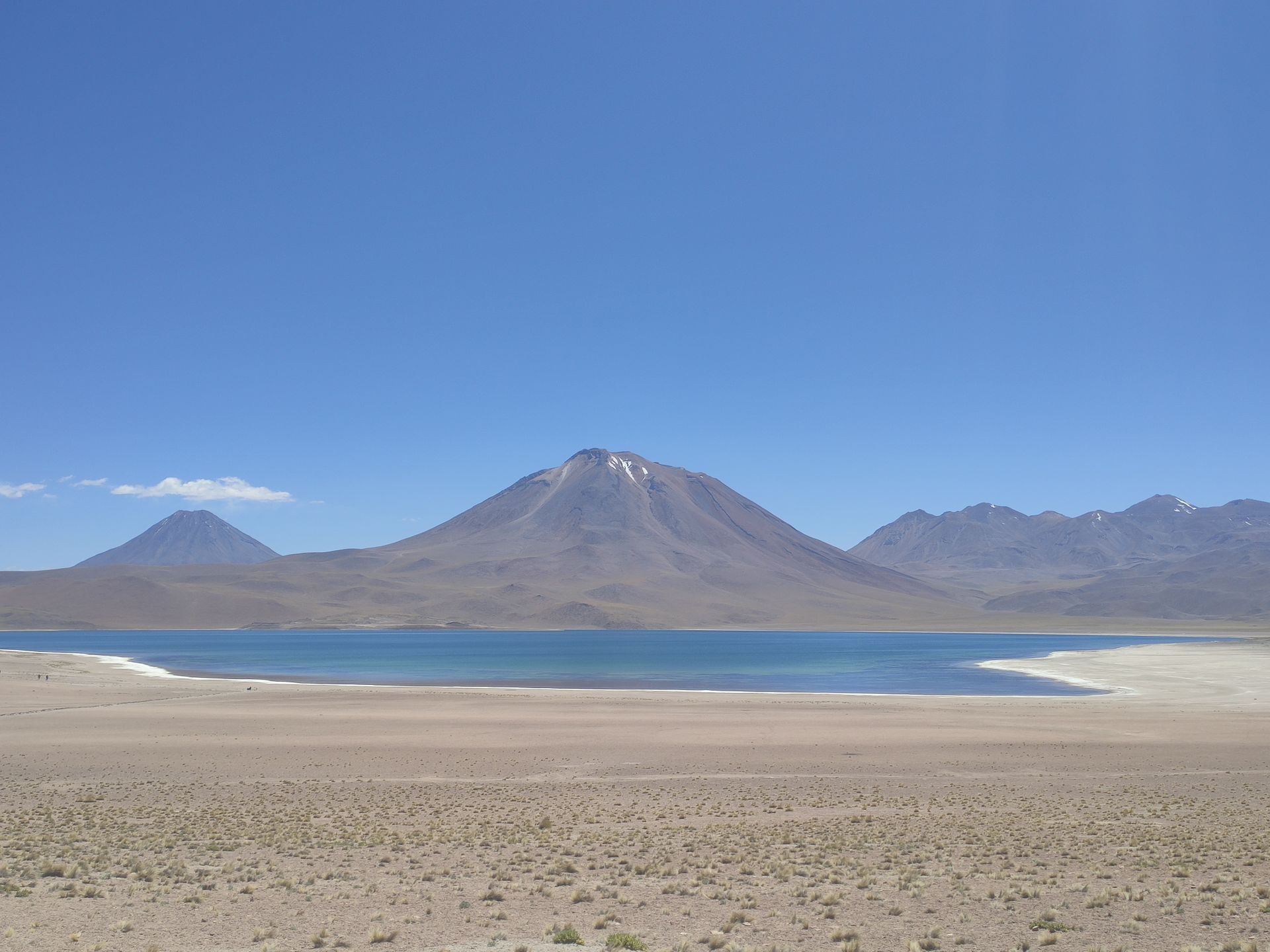
On December 20th, we started heading back north and made two stops along the way to avoid traveling for nearly 20 hours at once. After a night in the beautiful town of Calama, we continued to the northernmost city in Chile - Arica. The bus journey took us across the Atacama Desert, which has a north-south extent of about 1,200 km. Accordingly, the bus ride was a bit monotonous and we tried to pass the 11 hours by sleeping a lot and playing "city-country-river". We stayed one night in Arica on the Pacific coast and enjoyed stretching our legs on the beach promenade after the long journey - including a sunset.
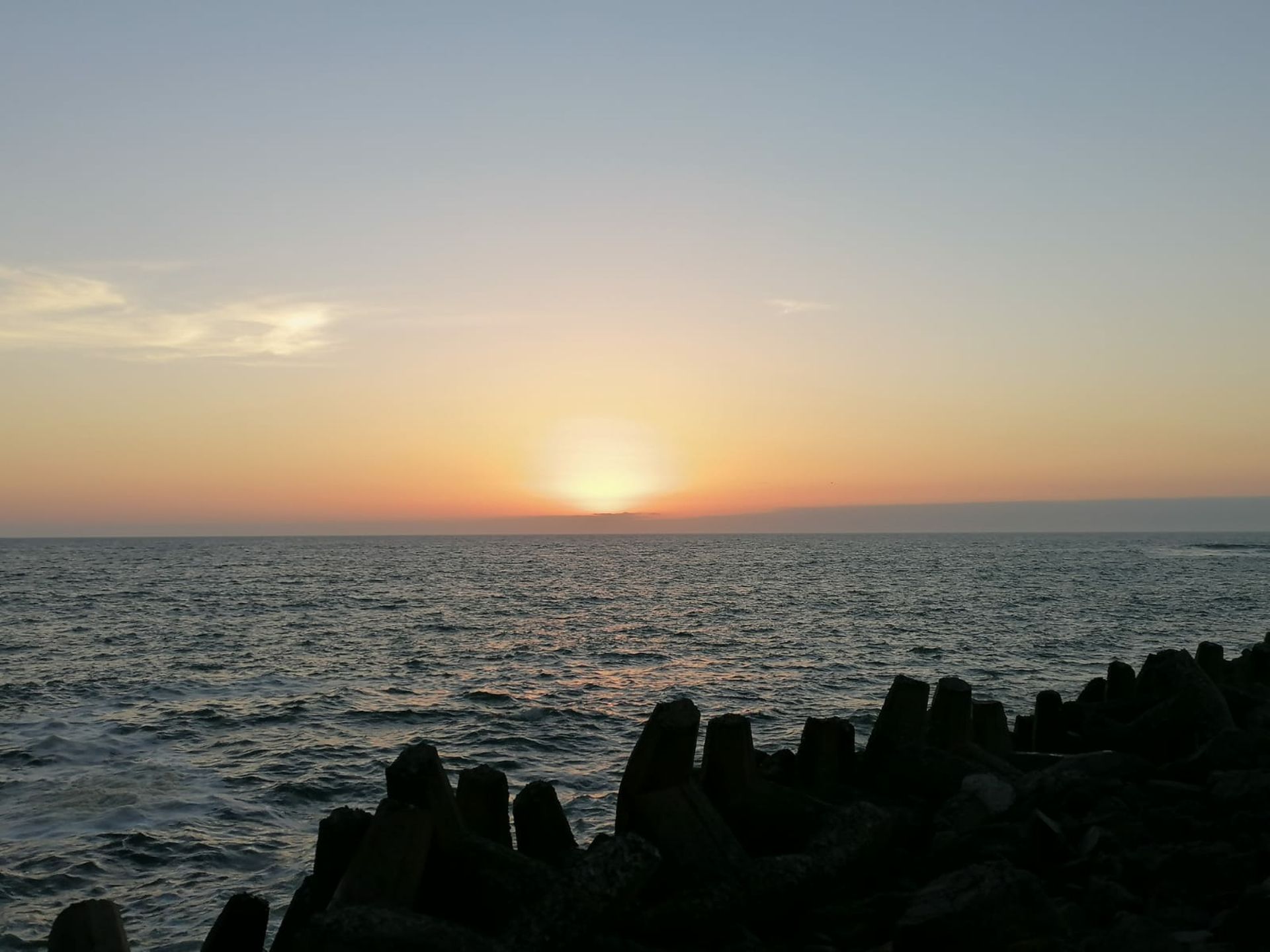
The next day, we started our journey across the border to Peru. Since we didn't manage to eat our 5 carrots and 2 apples together and the import and export of fruits and vegetables is not allowed, we had to come up with a master plan to get our valuable goods across the border. We left the bus with all our belongings for the baggage check... except for our vegetarian colleagues, whom we left on the bus in the hope that no one would discover them. After all passengers and their luggage had been meticulously examined, the officers set off to inspect the bus. Slightly tense, we questioned whether our decision could be considered reasonable in terms of cost-benefit. "Don't look, it's so obvious!" But everything went well, nothing happened: the border guards didn't find our smuggled goods and we were able to consume Chilean products in Peru. They tasted at least twice as good! In order to avoid food waste, we felt like two superheroes despite our minor criminal act 😊
After another 12 hours on the bus and the realization "Enough is enough - now we really can't stand it anymore!", we arrived back in our second home - Arequipa. It was the evening of December 22nd and we collapsed into our beds completely exhausted.
Fa'asoa ile Newsletter
Tali

Lipoti o femalagaaiga Bolivia

